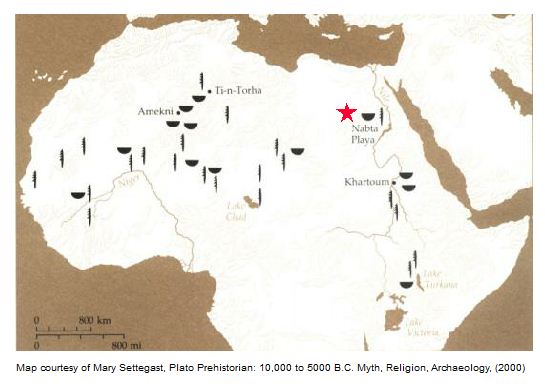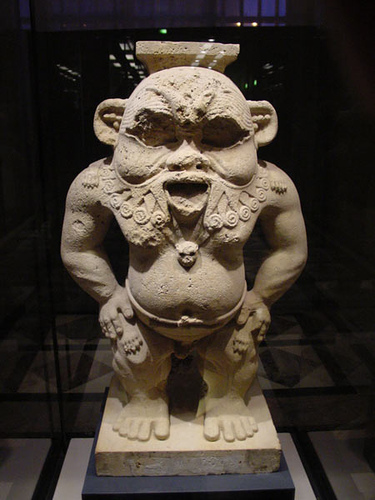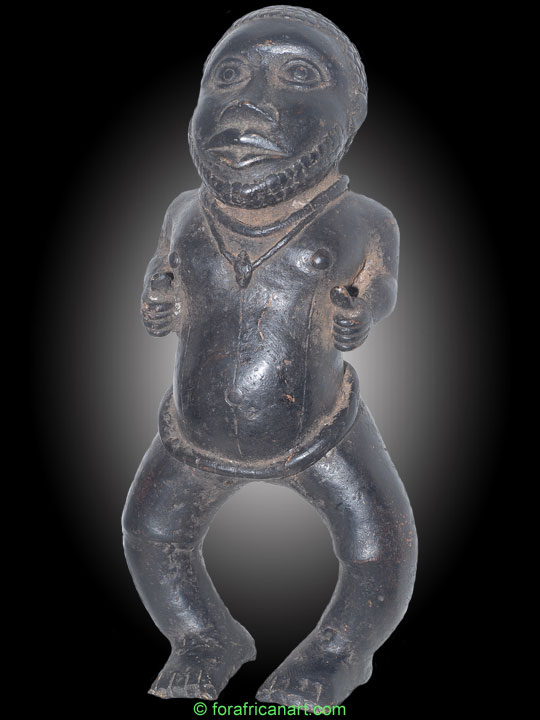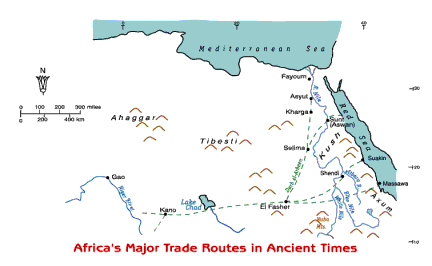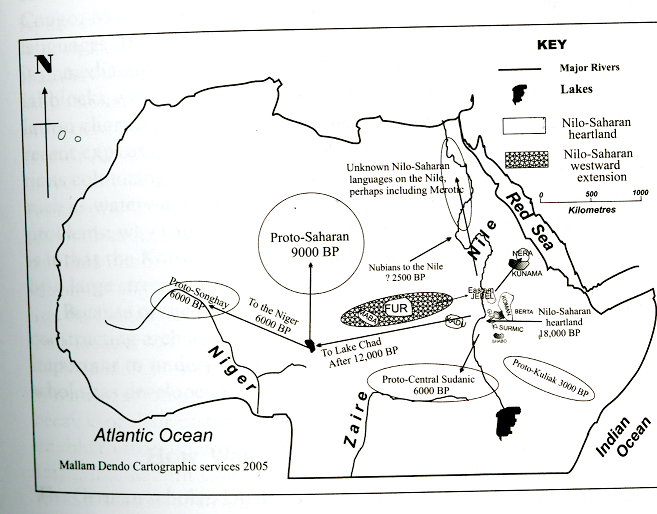Hapi Valley Origins and Dispersal of "Niger-Congo speakers"
Jan 1, 2014 23:44:12 GMT -5
asante and northsiderasta like this
Post by asante on Jan 1, 2014 23:44:12 GMT -5
The information of the current thread is directly linked to this thread.
The Hapi Valley
The Roman invaders renamed the African named "Hapi"/"Happy River", into "the Nile", "Nil".
Latin - Definition of "nil" -
"
: NOTHING, ZERO... Tricknology 101

Thank you Dr. Ben
"THE WHOLE EFFORT OF MODERN SCIENCE, UNTIL THE PAST FEW YEARS, HAS CONSISTED IN DENYING, DESPITE THE FACTS, THIS ROLE OF THE NEGRO IN THE ACQUISITION OF CIVILIZATION".. C.A. DIOP; AFRICAN ORIGINS OF CIVILIZATION, PG 250
"OUR PRIDE IN OUR HISTORY IS NOT DETERMINED BY THEIR LIBERAL SENTIMENTS, BUT RATHER HARD EVIDENCE" - Ivan Van Sertima


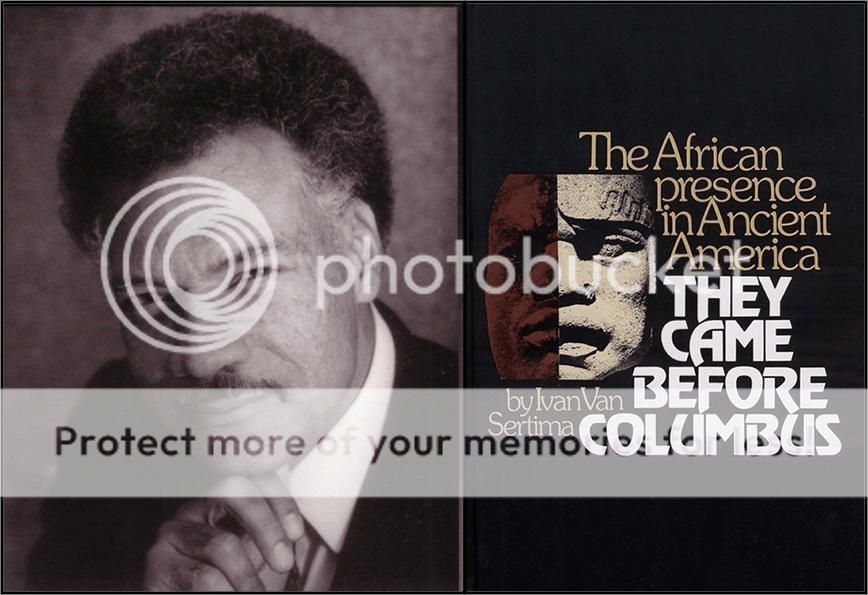

link
Table Content:
POST # 1
1) Introduction - Main Thesis
*The Bio-Cultural Designation of Our People As "Niger-Congo" Speakers
*You Have to Know the History Before You Know The Mystery
*White Lies
2) Examining Pre-Historic Evidence
*Usage of the Term "Negroid"
* The Racial Affinities of the Oldest AMH (Anatomically Modern Human) Remains in the Kemet
*The Great Sphinx's True Age, Racial identification and Historical Implications
*The Natufians, who were they; what did they look like and social-politics associated with those facts
3) The Language Factor Controlling The Narrative
Exposing the Lies of Mainstream Linguistics & Spot lighting True Linguistic Relationships
* The creation and promotion of the false "Afro-Asiatic" Language
*Examining the false narrative of the "J. Greenberg Bantu Migration"
*Examining the evidence of ancient Northeast African presence and origins of the Bantu-Niger Congo speaker
*Examining the close relationship, co-mingling, and joint migrations between Niger-Congo speakers and so called "Afro-Asiatic" languages
4)The Origin of Civilization in Nubia and it's spread around the old World
*The Fertile Ancient Sahara Period & the Next Phase of Civilizations
*The Phantom African Population - Dravidian/Tamil Factor
*Listing of ancient Civilizations and the Evidence of their African Bio-Cultural Affinities by World Regions
*The Near East/Sub continent
*The Levant and Aegean
*The Tamahu/Whites and their affect on the already Listed Originally Melaninated Cultures/Civilizations in Europe and Asia
*West Africa- Dhar Tichitt & the Mande
5)The Bio-Cultural Affinities between Niger-Congo speakers and ancient Kemet
6)The Genetic Evidence of Mass Migrations of "Niger-Congo" Speakers from Nubia-Kemet into Sub Saharan Africa
*Pre-Genetic era theories of mass migration from Northeastern African Civilizations
*Modern Genetic Evidence to validate the migrations
* Recent Controversies created from Disingenuous scholars
POST #2
7)Modern Day Inhabitants of "Egypt" and the False Narrative of Their Claims to the Ancient Legacy of the land
8) Distinct Africoid Populations who Comprised the populations of ancient Kemet
*Discuss the Twa and their pivotal role in the creation of all civilizations
*Reading in between the lines to breakdown the populations of ancient Kemet based on biological information using UNESCO 1974 findings as a basis
9)Examining the Evidence of the Second and Third Genesis of Hapi Valley Civilization Starting Up in "Eastern Asia" and in the "Americas"
*Eastern Asia's African origins
*Ancient China's Hapi Valley - Indus Valley connections
*Genetic Information on the Americas first inhabitants
*Bio-cultural evidence of the Olmec's Africoid Origins
*The Context of the "Race Wars" in Pre-Colonial Americas
*The evidence of a continued lineage among the ancient and modern blacks of America
10) The Tamahu - The Whites
*The examination of their "mythical" Origins with modern evidence to validate or rebuke
*Biological evidence not publicly known that distinguishes the Tamahu from Melaninated People
*The Semitic Branch
*A brief summary of the History that our people have had with the Tamahu over time
*The legacy of the Tamahu
11)The Breakdown of African Civilization - The time right before the big 2,500 year drop in World Consciousness
*Our dealing with the rise of the Semites and the Tamahu and the end of our dominance around the Globe
*Ramses III and the successful last stand that was put up against them
*The Destruction of Black Civilization - From Within/The Mulatto Factor
*The End of Kemet and the rise of the Tamahu lead nations
*Nubia and it's impeccable resistance to outside invaders until it's end
POST #3
*The Rise of interior African civilizations as a result of the scattering of our people through "Sub Saharan Africa" following the destruction of our unity in Northeastern Africa
*More Cultural Comparisons between ancient Kemet and modern populations throughout "Sub Saharan Africa"
Main Thesis
Alkebulan On Top
The real position of Earth is upside down as opposed to that which we are accustomed to seeing on so called "normal" (Eurocentric) images of the Earth. Below is a Moorish (indicated by the colonization of southern Europe seen at the bottom) map which shows African states and the actual black African reference to this most ancient land which modern people migrated from.

Let's start with the acknowledgment of these two pivotal facts.
If you notice I tend to put quotation marks around the term "Niger-Congo", because ultimately it is a Western designation for our group. While Bantu sounds good to call us, we must remember that the West African populations whom still have overlapping linguistic ties and are genetically bound with Bantus, do not fully speak "Bantu" languages. The issue is....We don't even have a collective non Western derived name for our greater African family to refer to ourselves. This must be addressed. The Africans who came with the Pre-Columbian Olmec and Mande migrations to the Americas and the transatlantic enslaved trade are almost exclusively of this "Niger-Congo" African genetic stock as the studies immediately following the next paragraph lays out.
Indigenous Africans house over 90% of the human genetic diversity. This fact essentially disproves the notion of race as we know it. Pale/depigmented people for example are a "genetic condition" rather than a "race". From a genetic perspective the only groups on Earth that can be legitimately distinguished into "races" are the different types of Africoid ("Sub Saharan Africans" in the graphic below) populations. There is more genetic diversity between two Africans in what is today "Nigeria" than there is between an Irish and a Han Chinese individual.

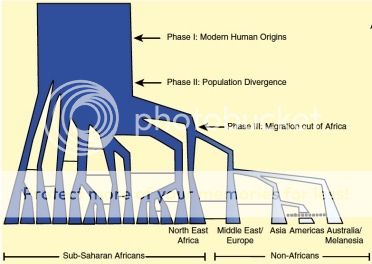
(Tishkoff 2009)
The second fact
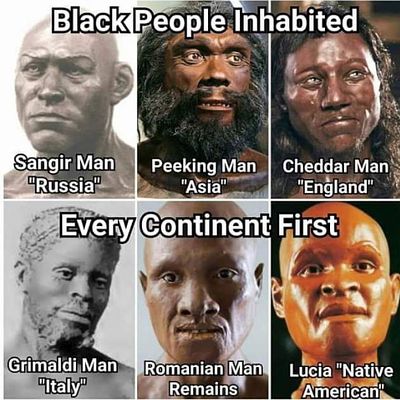
The Bio-Cultural Designation of Our People As "Niger-Congo" Speakers
* Bantu is the largest sub grouping within the "Niger Congo" languages
* Bantu is the largest sub grouping within the "Niger Congo" languages
If you notice I tend to put quotation marks around the term "Niger-Congo", because ultimately it is a Western designation for our group. While Bantu sounds good to call us, we must remember that the West African populations whom still have overlapping linguistic ties and are genetically bound with Bantus, do not fully speak "Bantu" languages. The issue is....We don't even have a collective non Western derived name for our greater African family to refer to ourselves. This must be addressed. The Africans who came with the Pre-Columbian Olmec and Mande migrations to the Americas and the transatlantic enslaved trade are almost exclusively of this "Niger-Congo" African genetic stock as the studies immediately following the next paragraph lays out.
Indigenous Africans house over 90% of the human genetic diversity. This fact essentially disproves the notion of race as we know it. Pale/depigmented people for example are a "genetic condition" rather than a "race". From a genetic perspective the only groups on Earth that can be legitimately distinguished into "races" are the different types of Africoid ("Sub Saharan Africans" in the graphic below) populations. There is more genetic diversity between two Africans in what is today "Nigeria" than there is between an Irish and a Han Chinese individual.


(Tishkoff 2009)
"In addition, craniometric variation also shows agreement with genetic data in showing highest levels of diversity in sub-Saharan Africa than in other geographic regions (Relethford and Harpending, 1994). Further, there is a clear decline in levels of craniometric variation as geographic distance from East Africa increases (Manica et al., 2007; von Cramon-Taubadel and Lycett, 2008; Betti et al., 2009)."
-- John H. Relethford* (2010). Population-Specific Deviations of Global Human Craniometric Variation From a Neutral Model. AMERICAN JOURNAL OF PHYSICAL ANTHROPOLOGY 2010
and
"Africa is the source of all modern humans, but characterization of genetic variation and of relationships among populations across the continent has been enigmatic...We identified 14 ancestral population clusters in Africa that correlate with self-described ethnicity and shared cultural and/or linguistic properties....The ancestry of African Americans is predominantly from Niger-Kordofanian (~71%)" - Tishkoff 2009
The second fact

There were numerous Pre-Historic migrations from Africa that brought our people into every corner of the Earth long before the establishment and expansion of "historical" civilizations, and it was later Africoid (an indigenous African population) migrants who established those civilizations. There is a persistent yet debunked Western lie that traditional African boats (such as those made from reed as seen on walls of Kemet) could not sail very far or that Africans did not travel outside of Africa unless enslaved. The fact that the oldest humans on every continent are Africoid means that all attempts by haters to say that later groups of Africans were incapable of doing so can be flicked off. Those populations who descend from those who usurped our lands and civilizations often get offended at the mentioning of these facts. Their pride has been entangled in what our ancestors taught their ancestors. This is a paradigm shift to those who are used to the false and recent notion of Africans needing to be "civilized".
The oldest permanent structure on Earth is Adam's Calendar in South Africa. This ancient astrological structure is on the same 31 degree longitudinal line as the Great Zimbabwe and the Great pyramid of Giza, and is over 200,000 years old. This along with recent genetic evidence indicates that the earliest of man may have originated in Southern Africa, diverged genetically from the Twa and the San and migrated north and east towards the Great Lakes where they would later interact with the Twa of Central Africa, and from there migrate north along the Hapi River. The Twa ("pygmies") who dominated Central Africa and parts of the Great Lakes were considered the progenitors of civilization. It is from the Great Lakes where the ancient Kemites claim to have originated ("the Mountains of the Moon where the God Hapi Dwells"). It is not to mention that the first Christ figure was the Twa deity Bes who would later become the God "Heru" in Hapi Valley mythology. It is from "Heru" of Hapi Valley civilization that the modern Jesus "Christ" story came.

Take note of the fact that the only living humans with an actual recollection of dealing with the Annunaki are modern Africans.
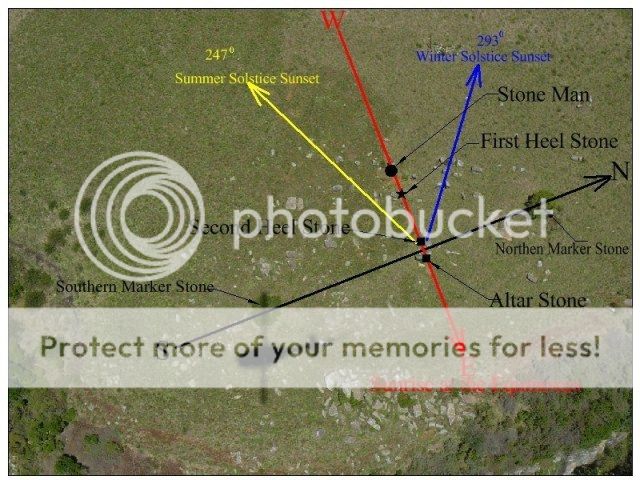
The people who have been deemed "African Americans" (since Jessie Jackson coined the term in the late 1980's), "Afro Brazilian", and other African diaspora throughout the continents of America who are generally of the E-M2 lineage, ancestors belonged to the Western classified Niger-Congo/Kordofanian languages, have broad facial features (Western defined as "true Negro") are the living inheritors of the legacy of ancient Hapi Valley civilization.
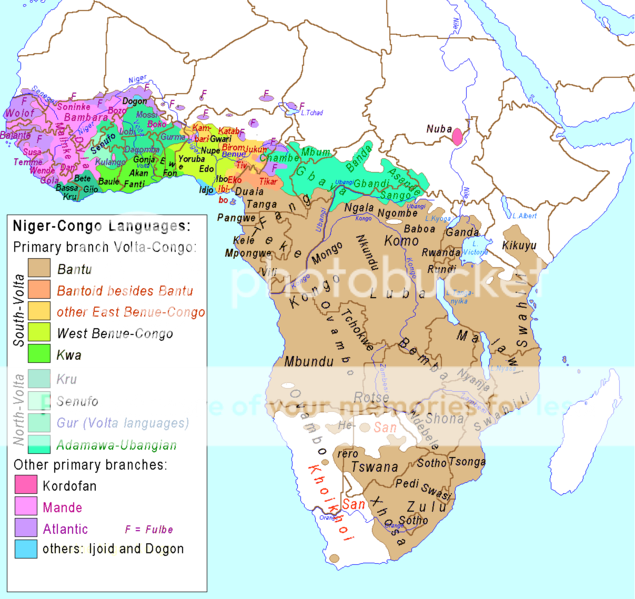
WE DID NOT ORIGINATE IN THE AREAS SHOWN IN THE MAP ABOVE (WEST, SOUTH, CENTRAL AFRICA), BUT AS ATTESTED TO BY THE ORAL TRADITION OF EVERY ETHNIC GROUP WE ORIGINATED IN NORTHEASTERN AFRICA, IN PARTICULARLY NUBIA. FROM NUBIA OUR ANCESTORS EXPANDED NORTHWARD CREATING KEMET AND ESTABLISHING DYNASTIC CIVILIZATIONS THROUGHOUT THE WORLD.
"It was pointed out that the study of the Blacks must begin in Egypt
because most of their indestructible monuments are there ; and, further,
because many of the artifacts archaeologists have been uncovering
during the past seventy-five years as "Egyptian" are in fact "African ."
Yet the very "Heartland of the Race" and the cradle of civilization were
actually further south below the First Cataract, centered around the capital cities of Napata and Meroe .
From there black civilization spread
north, reaching its most spectacular achievements in what became
known as "Egyptian Civilization ."
Destruction of Black Civilization
Pg 44-45
because most of their indestructible monuments are there ; and, further,
because many of the artifacts archaeologists have been uncovering
during the past seventy-five years as "Egyptian" are in fact "African ."
Yet the very "Heartland of the Race" and the cradle of civilization were
actually further south below the First Cataract, centered around the capital cities of Napata and Meroe .
From there black civilization spread
north, reaching its most spectacular achievements in what became
known as "Egyptian Civilization ."
Destruction of Black Civilization
Pg 44-45

YOU HAVE TO KNOW THE HISTORY BEFORE YOU LEARN THE MYSTERY!
Prior to the declining period of World consciousness around 10,000 B.C (the end of the Atlantean Zenith) when the World was entirely melaninated, we have a transition in civilization centering into a physical realm that is centered along the Hapi Valley and in the ancient fertile Sahara. Dynastic civilization starting as early as the 6th millennium BC beginning with Nubia/Saba/Ta-Seti in the areas between Sudan and the Southeastern Africa. The Qustul incense burner is the proof of Nubia being the oldest dynastic civilization on Earth, as it illustrates not only the World's first writing system known as Medu Neter (incorrectly credited widely as the "hieroglyphs" to the adjacent Kemetic Africans) but also the World's first monarchy (with notation of 12 more rulers prior to the one depicted).
There is a clumsy yet widespread Western lie that our people were essentially "stationary" for around 10,000 years following an initial Western migration from Eastern Africa around 12,000 BC. Western scholars (J. Greenberg) then clam that from a West African point that is now "Cameroon" there was a sudden emergence and major dispersal of "Bantu" branch speaking Niger-Congo speakers into Central, South-Eastern, and Southern African origin to which they call the "Bantu Migration". This falsified history was put in place to mislead the World about who we are, and what we have accomplished as a people over the last 12,000 years. Particularly the West wishes to deny our connection to Hapi Valley civilization, and the subsequent fact that our people created every civilization in the World. The lie is thoroughly exposed in the following sections with the use of recent genetic evidence, linguistic and archaeological evidence. There is overwhelming evidence that our people had a dominant and long standing presence along the Hapi Valley from interior eastern Africa down into the Delta along the Mediterranean going back as far as the Nazlet Khater man found in "Egypt" over 33,000 years (also discussed in the next section). Hapi Valley civilization is tens of thousands of years old, and has gone through many zeniths. If we wish to include it as evidence (some do not) we can count at least 25,000 years according to the supposed Emerald Tablets of Thot. It is interesting that that date correlates with the so called "Doomsday Clock Theory" (or reawakening of consciousness for the original people) regarding the age of Great Pyramids of Giza and the Sphinx proposed by Graham Hancock..
Examining Pre-Historic Evidence
33,000 Year Old "Negroid" Skull Is The Oldest Human Found In Nubia-Kemet
,
Prior to advent of dynastic civilizations starting with Nubia in the 6-4th millennium B.C.E. there was still a cultural continuum along the Hapi Valley (both Nubia and Kemet) demonstrated through what Western scholars have coined the Nubian complex. This culture originated deep in inner East Africa stretching north into Kemet and was found extending across the Red Sea into Arabian Peninsula (really just northeast Africa) over 100,000 years ago.

Affad - 23

To reiterate the post Atlantis era of civilization began with Nubia (starting between the 6th and 4th millennium BC) as it is the oldest, longest lasting and greatest (most contributing) civilization in World History. The concept of Nubia and Kemet being two seperate nations is a Western fallacy that was set in place in order to imply that there were racial distinctions in the region. There was a series of migration of the Africans from the Hapi River Valley that formed the basis for all civilizations around the World. The age and shear depth of knowledge that showered the World from this continuous Hapi Valley civilization is insulted by the mere 5,000 year date given by "traditional"(proven to be racist liars) Western historians and their paid stooges.
White Lies
The Piltdown Man - Breaking Away from "Orthodox History"
The Piltdown Man - Breaking Away from "Orthodox History"
White people during the heyday of their overt scientific racism (19th to late 20th century) were in agony over the indisputable facts that humanity and civilization originated with melaninated Africans. These facts came through their own "scholar's" consistent findings (some shown below). To remedy their deflated egos, they resorted to gluing together various parts from hominoids and primates skulls to make a fake skull. They then claimed to discover this abomination in England/Europe in order to give Europeans the claims to the origins of humanity. The white Western World let this shit ride for decades before someone finally stepped up to end the madness....This is who we are dealing with! This is how far they took it to steal a legacy that does not belong to them. For this reason EVERYTHING that they present even to this day MUST be taken with a grain of salt and independently investigated.
Aside from the origins of humanity, Western scholars have for centuries now tried to manufacture a false image of ancient Hapi Valley civilization (especially concerning Kemet) that removes our people from it. They have done this through deliberately misclassifying indigenous physical variability exhibited by ancient and modern melaninated Africans in anthropology as some branch of "Caucasoid".

The juvenile, racist, white game of half truths and blatant lies was put on blast by leading bio-geneticist S.O.Y Keita. Western "scholars" were creating wild fantasy based theories of whites migrating into Africa and creating a "black skinned" Caucasoid race (Somalis and Ethiopians) through a "Hamitic-Hypothesis" , and a "white race" migrating into the Hapi Valley displacing a "Negroid" (or Bantoid) population and creating "dynastic" civilizations through the Dynastic race theory. These theories of Demic Diffusions of non Africans into Africa have all been debunked in academia for decades, yet their lies persist in the mainstream. The lengths that Pale Devils have gone to lie about the story of our ancestors in ancient Kemet has been noted by many conscious black enlightened people. Even in recent attempts to "tackle the race issue" regarding ancient Kemet by the mainstream, is completely full of uncontexualized shit.


The juvenile, racist, white game of half truths and blatant lies was put on blast by leading bio-geneticist S.O.Y Keita. Western "scholars" were creating wild fantasy based theories of whites migrating into Africa and creating a "black skinned" Caucasoid race (Somalis and Ethiopians) through a "Hamitic-Hypothesis" , and a "white race" migrating into the Hapi Valley displacing a "Negroid" (or Bantoid) population and creating "dynastic" civilizations through the Dynastic race theory. These theories of Demic Diffusions of non Africans into Africa have all been debunked in academia for decades, yet their lies persist in the mainstream. The lengths that Pale Devils have gone to lie about the story of our ancestors in ancient Kemet has been noted by many conscious black enlightened people. Even in recent attempts to "tackle the race issue" regarding ancient Kemet by the mainstream, is completely full of uncontexualized shit.

To this very day whites are obsessed with manufacturing a false history for themselves through stealing our stories carved on the walls of the temples of the civilizations along the Hapi River.
Whites are quite simply impostors, and their TV (tel-lie-vision) and major social media platforms are their main tools used to propagate their lies. Their entire identity in every region that they inhabit is the direct result of a Frankenstein-like patch job of aspects from the various aboriginal black cultures that they have encountered. Their languages are not even theirs! The Indo-European language is a collective hodgepodge of languages that existed among the blacks of Asia and Europe that they stolen from (further explained below). Let's take the modern use of the word "bro". If you listen to any conversation between white boys of an age range from 14-35, "bro" is a regular noun in their vocabulary that they think is "all American" (meaning white). In reality the word "bro" is short for "brother", which is short for the 1960's-70's black term of endearment "Soul Brother" (proof from an 80's flick). If you tell these silly young white boys who have been programmed to hate melaninated people this truth about his daily vocabulary he will deny it. Meaning that nothing taught or contributed by us to them for their enlightenment can be appreciated by them! That goes for civilization nor even the use of speech can be appreciated by them. That is proof that integration with them is impossible, without the destruction of the other people involved.
Those who are not aware of the truth are those who are indoctrinated into this society, and who sadly often take their lies at face value. The people (all racial groups in the West) who do believe these lies find themselves worshiping genetic pale recessiveness, and eventually through programming choose recessive people over their own people to mate with. It's due to being mislead into a shameful pattern of self hate . The proponents for this coonery will say shit like it's "my preference" or "you love you who you love" or "love has no boundaries". When in reality it's not "preference", it is socially engineered (Coming from Top of the line media and pornography sites marketing whites and their pets as the default "hot" category) fetishes. The "You love who you love" rhetoric doesn't seem to apply to BROKE PEOPLE... It's amazing how weak minded race trading swirlers will not let racial lines (to the detriment of your own race) deter them from love, but can't seem to look below the poverty line for their mate through that powerful force known as "love". Societal convenience in the form of "exotic sex"/fetishization and access into the gentrified world is the primary reasons for this "love", by those who do not care about the black race, or at least sticks it's value to a low place on the totem (further discussed in the next post).
Examining Pre-Historic Evidence
33,000 Year Old "Negroid" Skull Is The Oldest Human Found In Nubia-Kemet
Prior to advent of dynastic civilizations starting with Nubia in the 6-4th millennium B.C.E. there was still a cultural continuum along the Hapi Valley (both Nubia and Kemet) demonstrated through what Western scholars have coined the Nubian complex. This culture originated deep in inner East Africa stretching north into Kemet and was found extending across the Red Sea into Arabian Peninsula (really just northeast Africa) over 100,000 years ago.

Affad - 23
Some of the proof of our early ancestral legacy of civilization can be seen in the recent revelation of the World's and Africa's second oldest permanent settlement found in Ta Seti (Sudanese Nubia) at an estimated age range of 15,000 to 70,000 years shown below.

Remnants of the Paleolithic settlements in Affad, Sudan.
"Archaeologists from the Institute of Archaeology and Ethnology in Poznań have unearthed a very ancient village, which dates back an incredible 70,000 years, according to a news announcement in PAP. The settlement is the oldest known early Homo sapiens site with sizeable permanent structures in Africa and points to a much more advanced level of human development and adaption in Africa in the Middle Palaeolithic than previously realised."
link
"Archaeologists from the Institute of Archaeology and Ethnology in Poznań have unearthed a very ancient village, which dates back an incredible 70,000 years, according to a news announcement in PAP. The settlement is the oldest known early Homo sapiens site with sizeable permanent structures in Africa and points to a much more advanced level of human development and adaption in Africa in the Middle Palaeolithic than previously realised."
link
Usage of the Term "Negroid"


Thomas A., Morphology and affinities of the Nazlet Khater man, Journal of Human Evolution, vol 13, 1984."
Dr. Ivan Van Sertima in his author's notes of "They Came Before Columbus" breaks down the reason why despite the stigma the "racialized terms" such as "Negroid" are being used in these types of assessments. Some will cry foul at the use of the term, but as Van Sertima points out that despite the "hurt feelings" this is still despite the availability of genetics a "precise science" in distinguishing core populations. Some Western academics have defined this patterned as "True Negroid", which is unique to the most widespread type of Africans on the continent the so called "Niger Congo" speaking populations.




The Racial Affinities of the Oldest AMH Remains in the Kemet




The Racial Affinities of the Oldest AMH Remains in the Kemet


Thomas A., Morphology and affinities of the Nazlet Khater man, Journal of Human Evolution, vol 13, 1984."
The "Negroid" remains of Nazlet Khater from 33,000 B.C.E. is apart of the Nubian complex. To reiterate a consistent stream of the oldest known human specimens in ancient Kemet are confirmed to have a "Negroid" morphology, that is unique to the Niger-Congo speaking populations of Africa today. This logically places our early prehistoric habitation in Northern Africa.
The Sphinx Is Over 10,000 Years Old & Represents A "Bantoid" Individual
Another piece of evidence which confirms that Kemet has long been an advanced civilization that has been dominated by Bantu populations (the latter is also proven by the morphology of the Nazlet Khaterr, Wadi Kubbaniya and Waldi Halfa) is attested to by the true age of the Sphinx.
The Sphinx is aligned with the star constellation of the LEO dating back to 12,000 -10,000 B.C.E.. The water erosion on the Sphinx is also confirmation that the Sphinx dates back to well over 5,000 years ago. The erosion came from the floods of the ending of the Ice Age, and with this fact known it only makes sense that the structure dates back to a much earlier time (I've seen estimates of it being constructed over 100k years ago).
"extreme erosion on the body of the Sphinx could not be the result of wind and sand, as has been universally assumed, but rather was the result of water. Geologists agree that in the distant past Kemet was subjected to severe flooding. This period coincides with the melting of the ice from the last Ice Age (13,000-10,000 B.C.E). Wind erosion cannot take place when the body of the Sphinx is covered by sand, and it can be proved that the Sphinx has been in this condition for nearly all of the last five thousand years - since the alleged time of its 4th Dynasty construction. Furthermore, if wind-blown sand had indeed caused the deep erosion of the Sphinx, we would expect to find evidence of such erosion on other Kemetic monuments built of similar materials and exposed to the wind for a similar length of time. ... this means the Sphinx was carved before Kemet was inundated with the waters of the great Ice Age floods, and that those waters caused the unique erosion patterns on the Sphinx."
The Sphinx's true age completely defies the Western notion of World populations being "primitive" prior to the end of the Neolithic. The Sphinx also predates Gobekli Tepe that is often raved about in "fringe" circles by Europeans and West Asians. The very engineering feat that the Sphinx is proves that tremendous social structure and organization must have been in place in these Hapi Valley populations. There must have been a highly developed knowledge of engineering, mathematics, astrology, and physics on top of organized social participation to have taken place in order for this feat to be accomplished.
The Natufians - African Origins of The Neolithic
Evidence has proven that Africans from Sudanese Nubia migrated into ancient Canaan over 13,000 years ago, and they will be referred to as the "Natufians". It was the resource strained and subsequently conflicted Hapi Valley population of Jebel Sahaba of Sudan during 13,000 B.C.E. (Pleistocene Nubians) who migrated into the Fertile Crescent during 12,500 B.C.E., and subsequently spread the Neolithic into Europe (as shown in the maps above). These people were found to be undoubtedly "Bantoid" and most of short stature (around 5'5 which is taller than the Twa average by about 6 inches), and again came from the Sudan - Nubia!(13,000 B.C.E. -7,550 B.C.E.)


“..one can identify Negroid traits of nose and prognathism appearing in Natufian latest hunters (McCown, 1939) and in Anatolian and Macedonian first farmers, probably from Nubia via the unknown predecesors of the Badarians and Tasians....". (Angel 1972. Biological Relations of Egyptian and Eastern Mediterranean Populations.. JrnHumEvo 1:1, p307
and
"They were clearly a Negroid people, said Sir Arthur, with wide faces flat- noses and long large heads." 1932 NY Times (Discovery of the Natufians)
Here is archaeological evidence.
"Ofer Bar-Yosef cites the microburin technique and “microlithic forms such as arched backed bladelets and La Mouillah points" as well as the parthenocarpic figs found in Natufian territory originated in the Sudan."
--Bar-Yosef O., Pleistocene connections between Africa and South West Asia: an archaeological perspective. The African Archaeological Review; Chapter 5, pg 29-38; Kislev ME, Hartmann A, Bar-Yosef O, Early domesticated fig in the Jordan Valley. Nature 312:1372–1374.
A recent study (and several older ones) has noted that Pleistocene (Jebel Sahaba) Nubians were identical to West African/Bantu populations ("Negroid") as opposed to contemporary "Cushitic" or "Nilotic" populations in the Sudan.
"In contrast, Irish and Turner (1990) and Irish (2000, 2005) noted that Pleistocene Nubians (in particular those of Jebel Sahaba skeletons) were as a group quite different from recent Nubians for dental discreet traits yet shared great phenetic affinity with recent West African populations." -- T.W. Holiday 2013 ("Population Affinities of the Jebel Sahaba Skeletal Sample")
(Jebel Sahaba/Pleistocene Nubian skull)



This wave of African migration into the Near East from the Hapi Valley around 12,500 B.C.E. is what initiated the spreading of the Neolithic settlements lead by the Twa into the Near East and further into Europe. The Deity Bes is associated with the Twa (misnamed pygmies) and has been worshiped outside of Africa in ancient Europe, Asia, Australia and the Americas.










The fact that the Natufians were "Bantoid" explains why their descendants who went into Europe are not related to Caucasians in Europe nor the Middle East today. Pale People tend to try to worm around their 2,000 B.C. exodus (from the Caucus), and attempt to default claim "European history"prior to this period (Stonehenge for example).
“The Niger-Congo speakers, Congo, Dahomey and Haya, cluster closely with each other and a bit less closely with the Nubian sample, both the recent and the Bronze Age Nubians, and more remotely with the Naqada Bronze Age sample of Egypt, the modern Somalis, and the Arabic-speaking Fellaheen (farmers) of Israel. When those samples are separated and run in a single analysis as in Fig. 1, there clearly is a tie between them that is diluted the farther one gets from sub-Saharan Africa" .....The surprise is that the Neolithic peoples of Europe and their Bronze Age successors are not closely related to the modern inhabitants... It is a further surprise that the Epipalaeolithic Natufian of Israel from whom the Neolithic realm was assumed to arise has a clear link to Sub-Saharan Africa...Interestingly enough, however, the small Natufian sample falls between the Niger-Congo group and the other samples used. Fig. 2 shows the plot produced by the first two canonical variates, but the same thing happens when canonical variates 1 and 3 (not shown here) are used. This placement suggests that there may have been a Sub-Saharan African element in the make-up of the Natufians (the putative ancestors of the subsequent Neolithic), .. When canonical variates are plotted, neither sample ties in with Cro-Magnon as was once suggested.
(Brace et. al. (2006). The questionable contribution of the Neolithic and the Bronze Age to European craniofacial form.

Gobekli Tepe
This initial migration of the Neolithic farmers beginning in Nubia stretched into ancient Anatolia (and ultimately Western Europe and eastern Eurasia). One of the most profound remnant of these people's settlement into this region is the 12 pillar zodiac aligned structure Gobekli Tepe which dates back to the 10th millennium B.C.E. (which is younger than the Sphinx of Kemet).

In this painting below in Catal Huyuk, Turkey depicts in accordance with anthropological evidence clearly Africoid individuals with the typical Hapi Valley human (not mankind) coloring scale, traditional African leopard skins, and even tightly curled hair.


An interesting cultural link to note Gobekli Tepe and modern peoples is shown with them and the original natives of Australia. There is considerable evidence for the theory stating that those aboriginal populations migrated to the Island relatively recently (than the 60k year OOA date) and that the site in Turkey was one of their own structures.

The Neolithic and certainly Mesolithic eras are regarded as "primitive" by Western scholars, so this 11,000+ year old structure in modern day Turkey; the 12,000 year old Sphinx of Kemet; 200,000 year old Adams calendar in modern South Africa; The 15-000 - 70,000 year old settlement in Affad 23, modern day Sudan that defies their logic are never put into historical context by Western historians. Acknowledging these structures would castrate their entire paradigm of History, because there is no way that the West can attribute them to non whites. Western historians have a major issue with trying to maintain their fictitious tales of human being devoid of intelligence for 99.99% of our existence on Earth. It makes no logical sense without explaining what cataclysmic event caused the breakthrough in what was a quarter million plus year intellectual stalemate. The words of ancient writers also give credence to the brilliance of humanity prior to the last 6,000 years from Kemetic and Indian writings all the way to the late coming ancient Greek scholars. This brilliance and retardation of humanity has been characterized as a natural cycle, and the low frequency "white man" is the by-product of the low end of the cycle in consciousness (hence only temporary).
In modern genetics (which is still a new field of research full of kinks and pressure from social - political manipulation) an attempt to try to lessen the blow of the known fact of an all melaninated ancient World, Western scholars have created a term "Basal Eurasian". According to Western scholars these people were depigmented non Indo-European people (which is ironic when we consider the fact that Indo-Europeans and their branches are the only recorded non melaninated people in existence) roaming "Eurasia" prior to the Indo European migration from the Caucus after 2,000 B.C. (Oh and white people HATE when this fact of their habitation and exodus from the caves is insisted upon in these discussions). Basal Eurasian DNA is essentially the DNA that Africans carried out of Africa during various periods and settled into all parts of Eurasia with, which was subsequently absorbed by the pure Caucasians populations turning them into semitic (semi recessive semi melaninated) populations of that region today. The Semitic populations today affected by white supremacy often wish to denounce the Africoid element of their fixed mulatto races, so they like to pretend that their mixture is an element in of itself. They denounce the original waves of settlement of the region by African migrants. Non melaninated people lie so much, that they will discount the only valid evidence to determine what a person or population looked like (physical anthropology), to make the Natufians (the same ones who were "clearly Negroid" from the findings above) look like them, because they took over the area.

Niger-Congo Languages at the Root of "Indo-European" Languages
The people who are considered "Caucasian" did not have a language, culture, and certainly not a civilization in the mountain range territory that they inhabited for thousands of years. As they were released from the caves those recessive hoards swallowed the smaller melaninated peoples who originally inhabited Eurasia (both Hunters and Gather populations and the Neolithic farmers) and absorbed their cultures, languages and technological innovations. The languages of those Neolithic populations of the Levant who made their way up to Europe was Niger-Congo. This has been confirmed by the fact that the Minoans were found to have spoken an Niger-Congo language.

All of which is cosigned by more recent studies such as the one released by Ricaut in 2008. Podcasters such as Joe Rogan often feature guest who speculate on the wave of high civilization that the World was on prior to 10,000 BC. These people often play the game demonstrated above of pretending the the people whom inhabited "Eurasia", and particularly Western Asia and Europe during these Mesolithic and Neolithic periods were "Indo-European" Caucasians. These people are amazing because they can go into great detail of these ancient sites, but act completely obvious to what consistent bio-cultural evidence has proven with regards to who these ancient "Eurasians" were.
Peer Reviewed Genetic Evidence Confirms the African Origins of the Natufians and the Migration into Europe
GJK Campbell-Dunn -

All of which is cosigned by more recent studies such as the one released by Ricaut in 2008. Podcasters such as Joe Rogan often feature guest who speculate on the wave of high civilization that the World was on prior to 10,000 BC. These people often play the game demonstrated above of pretending the the people whom inhabited "Eurasia", and particularly Western Asia and Europe during these Mesolithic and Neolithic periods were "Indo-European" Caucasians. These people are amazing because they can go into great detail of these ancient sites, but act completely obvious to what consistent bio-cultural evidence has proven with regards to who these ancient "Eurasians" were.
Peer Reviewed Genetic Evidence Confirms the African Origins of the Natufians and the Migration into Europe



Cont. details the introduction of the nomadic Caucasoid population into the civilized melainated World

--F. X. Ricaut, M. Waelkens. (2008). Cranial Discrete Traits in a Byzantine Population and Eastern Mediterranean Population Movements Human Biology. 80:5, pp. 535-564 :


The African Origins of Cattle Domestication is another pivotal piece of evidence to this equation;

The Language Factor - Controlling the Narrative

It is these findings of a chain of migrations that brought "Sub Saharan African biological affinities" associated with the Neolithic into the Near East, Europe and Asia that modern scientist confirm the racial identity via artistic reconstruction of those selected individual skeletal remains dating to these periods in Europe. i.e. Cheddar Man
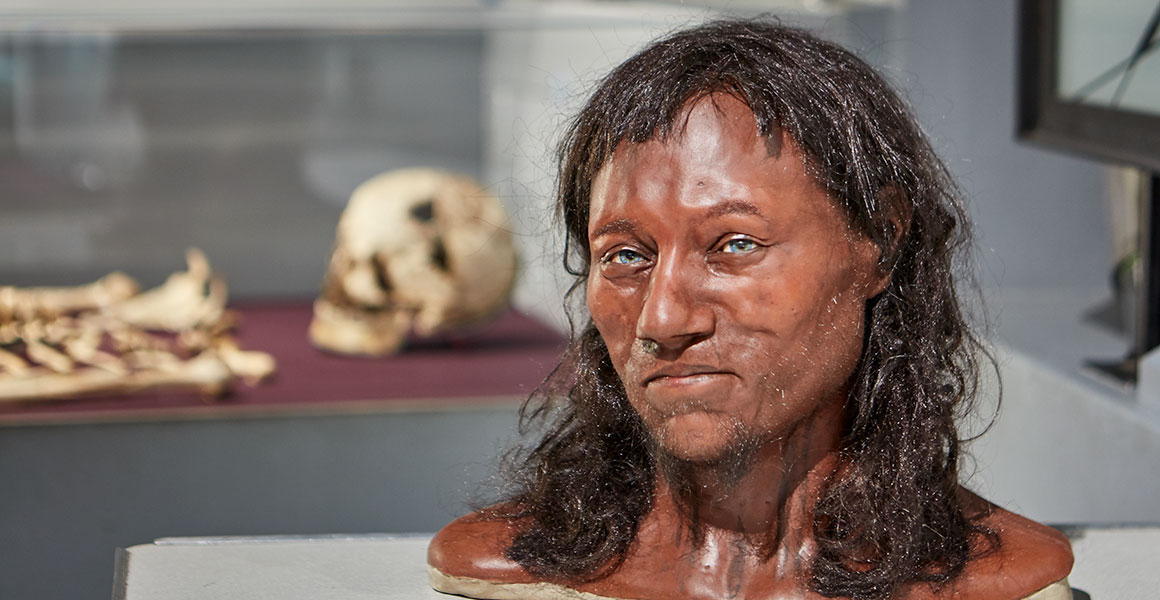
The builders of Stonehenge

Recent DNA analysis also find "designated" African DNA markers throughout Natufian samples

The builders of Stonehenge

Recent DNA analysis also find "designated" African DNA markers throughout Natufian samples


The African Origins of Cattle Domestication is another pivotal piece of evidence to this equation;

The Language Factor - Controlling the Narrative
According to Dr. Clyde Winters the Ancient Kemetic Language was Lingua Fraca that worked as a bridge of communication between the various distinct languages spoken by the melaninated African who inhabited the civilization. Western scholars have lied about the ancient Kemetic language being apart of a made up language family that Western scholars call "Afro-Asiatic".

(THEOPHILE EXPOSING THE LIE THAT ANCIENT KEMITES SPOKE AFRO-ASIATIC OR THE EXISTENCE OF SUCH A LANGUAGE FAMILY)
Language has been a major factor in identifying different population origins and interactions. The lies and myths surrounding the languages spoken by ancient peoples has been a crux for white supremacist notions following an "orthodox historical" approach. The lie that Niger-Congo speakers did not have involvement in Northeast Africa after the end of the Ice Age (12,000 BC) is essential to their attempts to write us out of history. In the graphic below the African language families are grouped differently by three linguist including Theophile Obenga. Obenga dismantled the Western lead notion that Niger-Congo languages are not closely related to "ancient Egyptian" (and other so called "Afro-Asiatic languages) as well as Nilo-Saharan languages. Obenga has contributed painstaking research over the past four decades has been crux to the narrative of this post by proving conclusively that Niger-Congo (with a focus on Bantu) along with the other mentioned languages originated and co-mingled in Northeastern Africa along the Hapi Valley and Saharan region before dispersing to their contemporary locations, and he calls this language family "Negro-Egyptian".

The ideological aspect (essentially white Egypt) of an Afro-Asiatic language family is what keeps it alive in Western academia. The reason why the Afro-Asiatic language is a false narrative is because, the Afro-Asiatic language has never been reconstructed as Obenga has pointed out.
There no mistaking the fact that this entire concept of the Afro-Asiatic language family is nothing more than a revamped PC 21st century version of the Hamitic Hypothesis or Hamitic-Semitic languages. In the picture below is an untrue statement regarding Niger-Congo and other African language groupings by UCLA'S Christopher Ehret. Christopher Ehret is a deceptive "white liberal" who likes to team up with "pro black" scholars who are also under the thumb of white supremacy (since they employ them and fund or not fund their research), to promote covert white supremacy. Christopher Ehret specializes in promoting the existence of this fake language family, which means that he specializes in the denial of the relationship between Niger-Congo speakers to ancient Northern and Eastern Africa. Interesting Ehret was initially promoted by the Western establishment to refute Theophile Obenga's stance relating ancient Kemetic to Niger-Congo languages, but he ended up agreeing with Obenga on the validity on "Negro-Egyptian".
Below is a piece that he wrote in which he acknowledges the undeniable fact that Niger-Congo originated in Northeast Africa (Nubia) due to the fact that it is the sibling of Cushitic languages (which he considers "Afro-Asiatic") which is undeniably East African in origin, but attributes the absence of Niger-Congo in the region's history to do an undisclosed yet major migration from Nubia into West Africa.

Here excerpt from Language Classification: History and Method (2008) by Campbell and Poser:
The Creation and Promotion of the False "Afro-Asiatic" Language & The White Liberal Deception


There no mistaking the fact that this entire concept of the Afro-Asiatic language family is nothing more than a revamped PC 21st century version of the Hamitic Hypothesis or Hamitic-Semitic languages. In the picture below is an untrue statement regarding Niger-Congo and other African language groupings by UCLA'S Christopher Ehret. Christopher Ehret is a deceptive "white liberal" who likes to team up with "pro black" scholars who are also under the thumb of white supremacy (since they employ them and fund or not fund their research), to promote covert white supremacy. Christopher Ehret specializes in promoting the existence of this fake language family, which means that he specializes in the denial of the relationship between Niger-Congo speakers to ancient Northern and Eastern Africa. Interesting Ehret was initially promoted by the Western establishment to refute Theophile Obenga's stance relating ancient Kemetic to Niger-Congo languages, but he ended up agreeing with Obenga on the validity on "Negro-Egyptian".
Below is a piece that he wrote in which he acknowledges the undeniable fact that Niger-Congo originated in Northeast Africa (Nubia) due to the fact that it is the sibling of Cushitic languages (which he considers "Afro-Asiatic") which is undeniably East African in origin, but attributes the absence of Niger-Congo in the region's history to do an undisclosed yet major migration from Nubia into West Africa.

Christopher Ehret in the video below is spewing the common lies on the subject under the guise of a white liberal ally. He starts off the lecture at the 21 minute mark by rebuking the obvious flaws of the study by Schuenemann in 2017 that proclaimed the ancient Egyptians were Neolithic Turkish migrants. A weak minded Negro would be so happy that that that "good white man" is rebuking that bullshat racist study, that they would allow that "good white man" to mozzy on in with his equally anti black African fables that again remove our people from ancient Kemet. His lies are nothing more than the debunked narrative of the origins and migration of Afro-Asiatic Cushitic East Africans.
One major fact that falsifies the notion of Africans inhabiting and spreading from what is now Cameroon is the glaring fact that Tropical West Africa was uninhabitable swamp land until the 2nd millennium BC per McIntosh & McIntosh 1981 ,1986. In Ehret's passage above he cites no evidence whatsoever to support this fictional migration of Niger-Congo speakers from Eastern Africa into Sub Saharan West Africa during the 12,000 BC period at the end of the Ice Age. The passage by Ehret also completely disregards the genesis of civilization resulting from our northward migration from the East African Nubian origin (that they even acknowledge indirectly) of our people up into Kemet.
J. Greenberg's Bantu Migration Theory from West Africa (Below) - Cameroon Debunked

Many African centered scholars such as CA Diop, Theophile Obenga, and more recently, Israel Ntaganzwa, Ferg Somo etc etc have debunked the Western fallacy in regards to the ancient Kemetic language having nothing to do with Niger-Congo and Nilo Saharan languages. These fallacies were put in place to manufacturer a cultural-linguistic distinction between Kemet and modern inner African populations. Western proponents assert that ancient Kemetic language as being an "Afro-Asiatic" language (grouped with contemporary Eastern (Omotic, Cushitic)- North (Berber) African languages and the African derived Western Asian "Semitic" languages). This has been thoroughly exposed and debunked at least since 1974 during the UNESCO Conference. No Western scholar at the time had dared to risk their reputation by stepping to the assertions of Obenga and Diop in their linguist correlations. They later tried to present Christopher Ehret in the 90's as the "liberal alternative" to "extreme Afrocentrism" (their labels). He ended up looking stupid by ultimately having to concede that Obenga's linguistic groupings (hence "Negro-Egyptian") were correct, but in the same token they wanted to continue on with their lunatic theory of "Afro-Asiatic" as though Obenga's legitimate linguistic groupings did not outright refute the notion of an "Afro-Asiatic" language family (basically the "I'm white and I say so" treatment as was done in UNESCO decades prior).
The African scholars also debunk the Western - Greenburg Model of the "Bantu Migration". This lie is one that was created by Western scholars to hide the earlier genesis of civilization of our people when we resided in Northeastern Africa, as detailed above. The Bantu migration myth states that all Niger-Congo speakers huddled around the Niger river basis for around nine millenniums, and then suddenly around the 3rd millennium BC began to migrate into Eastern and Southern Africa. The Bantu migration from West Africa is in conjunction with the modern day Hamitic Hypothesis known as the Afro-Asiatic migration, which completely voided out the involvement of "Niger-Congo"/Bantu speaking Africans. No Africans in those regions except for the Twa have an oral tradition that puts their origins in interior Africa.
The African scholars also debunk the Western - Greenburg Model of the "Bantu Migration". This lie is one that was created by Western scholars to hide the earlier genesis of civilization of our people when we resided in Northeastern Africa, as detailed above. The Bantu migration myth states that all Niger-Congo speakers huddled around the Niger river basis for around nine millenniums, and then suddenly around the 3rd millennium BC began to migrate into Eastern and Southern Africa. The Bantu migration from West Africa is in conjunction with the modern day Hamitic Hypothesis known as the Afro-Asiatic migration, which completely voided out the involvement of "Niger-Congo"/Bantu speaking Africans. No Africans in those regions except for the Twa have an oral tradition that puts their origins in interior Africa.
Samwiri Lwanga-Lunyiigo - UNESCO

Recent Genetic Evidence makes it clear that the Bantu Migration from West Africa (the map above) is impossible;
credit due to "XYman"
The Bantu expansion revisited: a new analysis of Y chromosome 1 variation in Central 2 Western Africa
Valeria Montano, Okorie Anyaele, David Comas5 2
This is consistent with previous regional studies on Y chromosome diversity carried out in sub-Saharan Africa or in
other continents which** failed** to detect a robust correlation between genetic and linguistic
distances
In this way, we were able to detect some noteworthy differences within and among Bantu-speaking populations, mostly due
to haplogroups E1b1a7a (U174), E1b1a8a (U209), and E1b1a8a1 (U290), which contribute to their high level of inter-population differentiation and to the presence of distinct regional patterns of genetic variation. All these findings CONTRADICT the current VIEW of Bantu speakers as a homogeneous group of populations whose gene pools are mostly if not exclusively the result of a relatively recent population expansion”
and
A genomic analysis identifies a novel component in the genetic structure of sub-Saharan African populations - Martin Sikora 2011
"Studies of large sets of single nucleotide polymorphism (SNP) data have proven to be a powerful tool in the analysis of the genetic structure of human populations. In this work, we analyze genotyping data for 2841 SNPs in 12 sub-Saharan African populations, including a previously unsampled region of southeastern Africa (Mozambique). We show that robust results in a world-wide perspective can be obtained when analyzing only 1000 SNPs. Our main results both confirm the results of previous studies, and show new and interesting features in sub-Saharan African genetic complexity. There is a strong differentiation of Nilo-Saharans, much BEYOND what would be expected by geography. Hunter-gatherer populations (Khoisan and Pygmies) show a clear distinctiveness with very intrinsic Pygmy (and not only Khoisan) genetic features. Populations of the West Africa present an unexpected similarity among them, possibly the result of a population expansion. Finally, we find a strong differentiation of the southeastern Bantu population from Mozambique, which suggests an assimilation of a pre-Bantu substrate by Bantu speakers in the region.
The third PC allows us to discriminate between western/central (Mandenka, Yoruba), eastern (Maasai, Luhya), and southeastern populations (Mozambique), IRRESPECTIVELY OF LANGUAGE FAMILY. This is the PC that is mostly correlated with geography (Figure 2c), and the fact that it is the third RATHER THAN THE FIRST COMPONENT, as would be expected if isolation by distance was the predominant force shaping genetic diversity,16 implies that directional population movements (such as the Bantu expansion) and barriers to gene flow (such as that between food producers and hunter gatherers) are more relevant than geographic distance to understand the genetic landscape of sub-Saharan Africa. The distinction between west and southeast Africa is also shown with K4; at K5, the Niger-Congo speaking Luhya are separated from the rest. The new component that appears at K¼6 is restricted to African Americans and Biaka Pygmies, and is the last component that can be attributed to specific populations.
but not Pygmies). Among Niger-Congo populations, geography is the main factor explaining the genetic differences, with a remarkable similarity among western populations (Yorubas and Mandenka), which could reflect a burst in the expansion to the west, related to iron technology and Niger-Congo languages. (ii) The southeastern Bantu from Mozambique are remarkably differentiated from the western Niger-Congo speaking populations, such as the Mandenka and the Yoruba, and also differentiated from geographically closer Eastern Bantu samples, such as Luhya. These results suggest that the Bantu expansion of languages, which started 5000 years ago at the present day border region of Nigeria and Cameroon, and was probably related to the spread of agriculture and the emergence of iron technology,17–19 WAS NOT A DEMOGRAPHIC HOMOGENEOUS MIGRATION WITH POPULATION REPLACEMENT IN THE SOUTHERNMOST PART OF THE CONTINENT, but acquired more divergence, likely because of the integration of pre-Bantu people. The complexity of the expansion of Bantu languages to the south (with an eastern and a western route20), might have produced differential degrees of assimilation of previous populations of hunter gatherers. This assimilation has been detected through uniparental markers because of the genetic comparison of nowadays hunter gatherers (Pygmies and Khoisan) with Bantu speaker agriculturalists.2,21–24 Nonetheless, the singularity of the southeastern population of Mozambique (poorly related to present Khoisan) could be attributed to a complete assimilate on of ancient genetically differentiated populations (presently unknown) by Bantu speakers in southeastern Africa, without leaving any pre-Bantu population in the area to compare with"
THERE WERE NO OTHER AFRICANS IN SOUTHERN AFRICA BESIDES THE KHOISAN TO MIX WITH, AND THAT RELATIONSHIP BETWEEN THE MOZAMBIQUE BANTU'S AND THE KHOISAN HAS BEEN FOUND IN THE SAME STUDY TO BE POORLY RELATED!!! There was no phantom African population (map of Southern African populations/language families below) for them to mix with to be differentiated. This means that their genetic differentiation from other Niger-Congo speakers was long in place, but they with the other Bantu's were supposed to come from a "common West African origin".

Thus a common Cameroonian ancestry for Bantu speaking populations as the Greenberg Bantu Migration theory states has been debunked!!!
The Exert below from E. Welmers further undermines the Bantu Migration from West Africa narrative by bringing archaeological proof with the basenji dog that the Niger-Congo languages originated in upper Nubia, and spread into interior Africa.
Archaeological Evidence of the Northeast African Origin of Niger-Congo Speakers

Understand that Western scholars are insidiously trying to keep this information hidden, and while in face deny that they are trying to steal our history but will continue to steal our history (understand that both are the faces of whites now look at the situation in the World). This article below was written by an AFRICAN linguist and it pertains specifically to the "Bantu" branch of Niger-Congo speakers.
(African American/Black Caribbean/Black Central-South American extended populations)

THE REAL BANTU MIGRATION FROM THE SUDAN
SOME VARIATIONS IN PRONUNCIATION OF THE WORD 'BANTU' THE PEOPLE BANTU, BATU, ATHO, WATU, ATU, ACHO, BOT, BANU, BANHU, ADU
The hieroglyphics shown above spells out the word 'BATU' in keeping with the current original word 'BANTU'. The maps shown below trace the possible migrations of the Bantu people. The origin of the Bantu people is a controversial issue and has been deeply debated.
Below is an account which questions present day ideas about the origins of the Bantu people. In his book on the 'Restatement Of Bantu Origin and Meru History' the Kenyan scholar Alfred M M'Imanyara provides the evidence for a southerly migration from Kemet of the Bantu people.
THE NIGER- CONGO HYPOTHESIS
The Niger-Congo hypothesis developed by Joseph Greenberg on Bantu languages state that the Bantu originated in West Africa, the Cameroon, and migrated across the Congo basin into Southern and East Africa.
Guthrie on the other hand did not commit himself but said that the Bantu dispersal lies within an elliptical area towards the centre, in the woodland region of Katanga.
The Niger-Congo hypothesis needs to be re-examined further as one has to take into account oral traditions from groups of present day Kenyan Bantu elders who recall a southerly migration from Kemet.
The following sources of accounts of migrations of some of the Bantu speakers in Kenya are taken from:
i) Kenya an official handbook
ii) Story of Africa from earliest times, Book one, A.J Willis
iii) Longman GHC, E.S Atieno Odhimbo, John N. B. N. I Were
Almost all the Bantu people living in Kenya speak of a migration from up North. The people of Marachi location are known to have come from Elgon although other clans of the same group came from Kemet. They came in canoes on the River Hapi as far as Juja, Uganda and later moved eastward into lake Victoria. They changed course until Asembo and separated with the Luo who walked along the lake shore but the rest crossed into South Nyanza. They then turned northwards and reached Butere and then moved on to Luanda and to Ekhomo. The Luo people were behind them right from Kemet.
The people of Samia location came from Kemet on foot. The Abakhekhe clan too originated from Kemet on foot. The Abachoni clan originally came from Kemet on foot. The people of Bukusu originally came from Kemet in canoes.
Possible migration routes of Bantu from Central Sudan

The Luhya oral literature of origin, suggest a migration into their present-day locations from the north. Virtually all sub-ethnic groups claim to have migrated first south from Misri, or Kemet. In one of the Luhya dialect the word 'Abaluhya' means 'the people of the North', or 'Northerns'
Other sources report that the following Bantu people, the Luhya, Baganda, Nyarwanda, Rundi of Burindi, Kikuyu, and the Zulu all claim a southerly migration from Kemet. Moreover there are many groups of Bantu speakers from Tanzania, Mozambique, Congo, Zambia, Malawi, South Africa, who testify a southerly migration from Kemet. There are even groups of people from West Africa who migrated from Kemet into their present day location.
Apart from the oral traditions provided by Bantu elders, the evidence is also based on linguistic, historical, scientific and cultural studies done by Cheikh Anta Diop.
The following maps are taken from Alfred M M'Imanyara 'The Restatement of Bantu Origin and Meru History' published by Longman Kenya,
According to Alfred M M'Imanyra the following maps show the homeland of the original Bantu people in Kemet. This careful information has been derived from traditional sources provided by Bantu elders in the course of his research. I would like to support Alfred M M'Imanyara's work by sharing with him the important discovery of the of hieroglyphics above which mentions a Sudanic town of unknown situation. Clearly the town would have to be named after the people inhabiting the town, the 'BANTU' or the 'BATU', the people.
Original homeland of the Bantu up to 1500 A.D
Dark shading: Possible ultimate origin of the Bantu
Cross shading: Area of Bantu expansion into Kemet

Bantu Migration Routes from Cush and the Island of Meroe

Migration of the Bantu

Note: The settlements of the Bantu in West Africa may have been a result of two streams of Bantu emigrants: one from the Congo basin and the other directly from the Hapi valley."
The so called "Afro-Asiatic" Migration Throughout north and east Africa and into the Near East and Europe involved Niger-Congo Speakers
The so called "Afro-Asiatic" Migration Throughout north and east Africa and into the Near East and Europe involved Niger-Congo Speakers
Today however however Western scholars through the recent invention of the Afro-Asiatic language family (aka "Afrisan", "Afrasian","Hamitic-Semitic" ect), the old Hamitic Hypothesis is being revamped by implying that this northward migration from Punt is said to have occurred only involving the distinct "non Bantoid" Hamitic/Cushitic (narrow noses and thin lips like Ethiopians and Somalis) type of Africans who are also from the Northeast Africa. Western scholars say that these Africans carried the so called "Afro-Asiatic languages" throughout Africa and Asia as a result of this migration shown in the map below.

The Notation of Sickle Cell (A Niger Congo genetic trait) Along the So Called Afro-Asiatic Migratory Trail Inside and Outside of Africa, and The Fact that Sickle Cell Originated in Sudanese Nubia - Northeast Africa
Proof

Proof

You can compare the Afro-Asiatic migration pattern in this map to the distribution of sickle cell cell (an ignored genetic marker for Niger-Congo speakers) through the Levant and Southern Europe and see that that Niger-Congo speakers were clearly involved in these migrations.

In the map below the root Cushitic genetic marker "M-215" is shown migrating from Punt in the Horn of Africa northward into Nubia-Kemet and out into the Middle East and Europe.

From the information above we see details of this later migration from inner eastern Africa northward into Kemet,and then bi-direction into Northwest Africa and out of Africa at the end of the ice age around 13,000 B.C. We see this migration of African languages being called the "Afro-Asiatic Expansion", but there was nothing "Asiatic" about these people or languages, because they all originated in Africa with the possible exception of "Semitic" languages (which could have also originated with Africans in Africa). Following Obenga's Negro-Egyptian linguistic breakdown, this migration into these areas also included in the Niger-Congo speaking populations. The fact is that it was really a dual migration which included the Niger-Congo speaking "Bantoid" Pleistocene Nubians who are an ancestral group to contemporary equatorial E-M2 lineage carrying "Bantoid" African populations along with the other African branches of the so-called Afro-Asiatic languages. This is something that is attested to by African scholars (and actual speakers of the languages).

When the fertile Sahara period ended and the region returned to desert some of the Niger-Congo speakers would migrate into West Africa (Mande speakers), but most would immediately head east onto the the Hapi River Valley, establishing the oldest known monarchy in Nubia-Ta-Seti, and points onward into the Levant, Europe, Asia and America.


This map depicts some of the migration sequences from the Sahara, Ta-Seti and Kemet into the Levant, Europe and South and East Asia.

The Phantom African Population - Dravidian/Tamil Factor
Their African Origins
As the ancient Sahara began to dry most of the migrants from the region would migrate back onto Hapi Valley to establish dynastic Ta-Seti (Nubia) the World's first "recorded" monarchy, and it is postulated to date back as far as 5,900 B.C.E. according to archaeologist Boyce Rensberger. From the second stop of Nubia along the Hapi river the ancient Kushites migrated into the fertile crescent, the adjacent Arabian Peninsula and points eastward. Africans migrating from this region are responsible for the spreading of this indigenous African cultures to establish "civilizations" as defined in the traditional sense throughout Africa, "Hindu Kush" and the World. The Greek historian Herodotus and later Historians have verified that there were two sets of "Aethiopians" those in Africa and those and Asia. The Dravidians of India originated in Africa with the rest of the Africoid "races", and were apart of this migration as well.



Many Westerners will try to void out Niger-Congo speakers in this migration, because there is little E1b1a in an area (they only attribute it to some sort of slave trade), while they discount the facts that haplogroups such as J (the so called "Semitic" marker) have frequencies of over 40% in the Bantu-"Hebrew" speaking Lemba of South Africa. They also discount the fact that Y-DNA haplogroup R (thought to be exclusively the "white" Caucasian genetic marker) is found in it's highest frequencies in "Sub Saharan West Africa" - Cameroon. That's not even including the fact that sickle cell found in those areas as shown in the map above acts as backup genetic evidence as ancient relic of our ancient presence. Despite Niger-Congo speakers (who bear no physical distinction from the rest of the greater population) being found with those non M2 lineage markers Western scholars often times will discount the physical morphology of an ancient individual (if they look like us), and pronounce that the aDNA marker of the ancient person was "non African" to imply that the physical appearance could not have been Africoid to fit their "ideal" narrative. They also deliberately ignore this fact;
Despite knowing this very well known fact some geneticist deny the Hapi Valley African origins of Basal Euasian DNA as shown with the Naufians.
Dr Spencer Wells, Harvard evolutionary geneticist: "There is more genetic diversity in any single African village than in the whole world outside Africa."
Despite knowing this very well known fact some geneticist deny the Hapi Valley African origins of Basal Euasian DNA as shown with the Naufians.
"Linguistic Ties Between Ancient Egyptian and Bantu: Uncovering Symbiotic Affinities and Relationships in Vocabulary"
Book by Ferg Somo
The Ancient Kemetic language has always been considered to be a branch of the African-Asiatic family of languages called Afro-Asiatic which spans Africa and Western Asia.
Without going too deeply into the classification of the Afro-Asiatic language, according to Greenberg, the individual branches of the Afro-Asiatic family of languages include the following:
(1) Semitic, the largest branch of the Afro-Asiatic language which is spoken since ancient times in most of Western Asia, Mesopotamia, Palestine, Syria, Arabia and Africa.
The Semitic language has its origins in Africa.
(2) Berber, a group of related languages currently spoken by approximately five million speakers in Northern Africa from the Atlantic coast to the oasis of Siwa in Kemet and from the Mediterranean Sea to Mali and Niger.
(3) Cushitic, a family of languages spoken by approximately fifteen million people in Eastern Africa from the Kemetic border in North East Sudan to Ethiopia, Djibouti, Somalia, Kenya and Northern Tanzania.
Martin Bernal in his book, Black Athena, sees the spread of the Afro-Asiatic language as the expansion of a culture which was long established in the East African Rift Valley at the end of the last ice age in the 10th and 9th millennia B.C.E. During the last ice ages water was locked up in the polar icecaps and rainfall was considerably less than it is today. The Sahara and Arabian Deserts were even larger. During the increase of heat and rainfall in the centuries that followed, much of these regions became savannah, into which neighbouring peoples flocked.
The most successful of these were speakers of Proto-Afro-Asiatic language from the African rift valley. Going through the savannah, the Chadic speakers reached Lake Chad while the Berbers, the Maghreb and the Proto-Kemite arrived in Upper Kemet. However Martin Bernal did not consider speakers of Proto-Bantu in his analysis. It is the author’s contention, from the linguistic contents, that speakers of Proto-Bantu played an active part at the time of the expansion of Proto-Afro-Asiatic speakers in the Rift Valley of East Africa.These Proto-Bantu speakers going through the savannah formed part of the migration to Kemet. The Bantu languages together with other indigenous languages fused together and became embedded to form the Proto-Egyptian language. It is for this reason that the Ancient Egyptian language contains a substantial amount of Proto-Bantu or Bantu roots.
However Guthrie speculated that before the Proto-Bantu expansion from Zaire, there had been several pre-Bantu stages, at which time the Bantu ancestors lived far to the north around Lake Chad. One group from this area made its way to Zaire and became the Proto-Bantu.The Proto-Bantu speakers and Proto-Afro-Asiatic speakers lived along side each other. They traded together, shared and exchanged common vocabularies of words"
link.
The Origin of Civilization in Nubia and it's spread around the old World
The Fertile Ancient Sahara Period & the Next Phase of Civilizations
(6-4 millennium BC)

The first "Afrocentrics" were European researchers!
"THE MEDITERRANEAN RACE
Preface
WHEN this little book was first published in an Italian edition in 1895, and in a German edition in 1897, I was still unable to obtain many anthropological data needed to complete tha picture of the primitive inhabitants of Europe. In the English edition the book is less incomplete, richer in anthropological and ethnological documents, and hence more conclusive; it also contains replies to various objections which have been brought forward. This English edition, therefore, is not so much a translation of a work already published as a new book, both in form and arrangement
The conclusions I have sought to maintain are the following :- +
(1.) The primitive populations of Europe, after Homo Neandertkalensis, originated in Africa; these constituted the entire population of Neolithic times.
(2.) The basin of the Mediterranean was the chief centre of movement whence the African migrations reached the centre and the north of Europe.
(3.) From the great African stock were formed three varieties, in accordance with differing telluric and geographic conditions: one,.,peculiarly African, remaining in the continent where it originated; another, .the Mediterranean, which occupied the basin of that sea; and a third, the Nordtic:, which reached the north of Europe. These three varieties are the three great branches of one species, which I call Eurafrican, because it occupied, and still occupies, a large portion of the two continents of Africa and Europe.
(4) These three human varieties have nothing in common with the so-called Aryan races; it is an error to maintain that the Germans and the Scandinavians, blond dolichocephals or long-heads (of the Reihengraber and Viking types), are Aryans; they . are Eurafricans of the Nordic variety.
(5.) The Aryans are of Asiatic origin, and constitute a variety of the Eurafrican: species,• the physical characters of their skeletons are different from those of the Eurafricans.
(6.) The primitive civilisation of the Eurafricans is Afro-Mediterranean, becoming eventually AfroEuropean.
(7.) The Mycenrean civilisation had its origin in Asia, and was transformed by diffusion in the Mediterranean.
(8.) The two classic civilisations, Greek and Latin; were not Aryan, but Mediterranean. The Aryans were savages when they invaded Europe: they destroyed in part the superior civilisation of the Neolithic populations, and could not have created the Greco-Latin civilization
(9.) In the course of the Aryan invasions the languages of the Eurafrican species in Europe were transformed in Italy, Greece, and elsewhere, Celtic, German, Slavonic, etc., being genuine branches of the Aryan tongue; in other cases the Aryan languages underwent a transformation, preserving some elements of the conquered tongues, as in the NeoCeltic of Wales. Some of these conclusions no longer arouse the same opposition as when I first brought them forward. The arguments meeting with most resistance are those tending to overthrow the ancient conception of an Aryan civilization.
THE FUTURE WILL ENABLE US TO SEE THESE QUESTIONS MORE CLEARLY. G. SERGI.
ROME, Feoruary, 1901."
As we can see, what is being presented by myself is nothing more than a rebirth of the truth. The truth that the West has known for hundreds of years, but has tried to bury in a sad attempt to spare their fragile egos. As shown above the Hapi Valley is the ultimate source of Neolithic. Following the spreading of the Neolithic outside of Africa which began with migrations that occurred after the end of Ice Age by the Natufians (12,500 BC) were several other successive migrations of Africans throughout the northern half of the continent and outside of Africa. One of the reciprocal affects of the climate change at the end of the Ice Age (13,000 BC) was the shrinking of the Hapi River Valley that most of the Africans once inhabited. Conversely new heavy rains vitalizing the adjacent Sahara desert to the West for a few millenniums triggered a migration of those Africans from the Hapi River Valley to the Sahara. They brought with them the Neolithic that has been said to date back to the Hapi Valley to at least around 15,000 BC. Lake Chad which was enormous at the time, and a river Valley much like the Hapi River formed going though what would be Libya into the Mediterranean (shown in the map below). Scholars have speculated that Lake Chad and that river was the location of a major civilization. The different types of Africans who lived in the ancient Sahara during the fertile period included the Niger-Congo speakers, Nilotes, Cushitic speakers (Hamites) and Dravidians (of India today). When these Africans migrated from the Sahara during it's different drying phases the spreading of post Atlantis civilization began. One of the major Neolithic Megalithic Saharan sites is Napta Playa (the Western Desert) which is shown in the following picture. This is the original "Stonehenge" predating the one in Europe by thousands of years. Book by Ferg Somo
The Ancient Kemetic language has always been considered to be a branch of the African-Asiatic family of languages called Afro-Asiatic which spans Africa and Western Asia.
Without going too deeply into the classification of the Afro-Asiatic language, according to Greenberg, the individual branches of the Afro-Asiatic family of languages include the following:
(1) Semitic, the largest branch of the Afro-Asiatic language which is spoken since ancient times in most of Western Asia, Mesopotamia, Palestine, Syria, Arabia and Africa.
The Semitic language has its origins in Africa.
(2) Berber, a group of related languages currently spoken by approximately five million speakers in Northern Africa from the Atlantic coast to the oasis of Siwa in Kemet and from the Mediterranean Sea to Mali and Niger.
(3) Cushitic, a family of languages spoken by approximately fifteen million people in Eastern Africa from the Kemetic border in North East Sudan to Ethiopia, Djibouti, Somalia, Kenya and Northern Tanzania.
Martin Bernal in his book, Black Athena, sees the spread of the Afro-Asiatic language as the expansion of a culture which was long established in the East African Rift Valley at the end of the last ice age in the 10th and 9th millennia B.C.E. During the last ice ages water was locked up in the polar icecaps and rainfall was considerably less than it is today. The Sahara and Arabian Deserts were even larger. During the increase of heat and rainfall in the centuries that followed, much of these regions became savannah, into which neighbouring peoples flocked.
The most successful of these were speakers of Proto-Afro-Asiatic language from the African rift valley. Going through the savannah, the Chadic speakers reached Lake Chad while the Berbers, the Maghreb and the Proto-Kemite arrived in Upper Kemet. However Martin Bernal did not consider speakers of Proto-Bantu in his analysis. It is the author’s contention, from the linguistic contents, that speakers of Proto-Bantu played an active part at the time of the expansion of Proto-Afro-Asiatic speakers in the Rift Valley of East Africa.These Proto-Bantu speakers going through the savannah formed part of the migration to Kemet. The Bantu languages together with other indigenous languages fused together and became embedded to form the Proto-Egyptian language. It is for this reason that the Ancient Egyptian language contains a substantial amount of Proto-Bantu or Bantu roots.
However Guthrie speculated that before the Proto-Bantu expansion from Zaire, there had been several pre-Bantu stages, at which time the Bantu ancestors lived far to the north around Lake Chad. One group from this area made its way to Zaire and became the Proto-Bantu.The Proto-Bantu speakers and Proto-Afro-Asiatic speakers lived along side each other. They traded together, shared and exchanged common vocabularies of words"
link.
The Origin of Civilization in Nubia and it's spread around the old World
The Fertile Ancient Sahara Period & the Next Phase of Civilizations
(6-4 millennium BC)

The first "Afrocentrics" were European researchers!
"THE MEDITERRANEAN RACE
Preface
WHEN this little book was first published in an Italian edition in 1895, and in a German edition in 1897, I was still unable to obtain many anthropological data needed to complete tha picture of the primitive inhabitants of Europe. In the English edition the book is less incomplete, richer in anthropological and ethnological documents, and hence more conclusive; it also contains replies to various objections which have been brought forward. This English edition, therefore, is not so much a translation of a work already published as a new book, both in form and arrangement
The conclusions I have sought to maintain are the following :- +
(1.) The primitive populations of Europe, after Homo Neandertkalensis, originated in Africa; these constituted the entire population of Neolithic times.
(2.) The basin of the Mediterranean was the chief centre of movement whence the African migrations reached the centre and the north of Europe.
(3.) From the great African stock were formed three varieties, in accordance with differing telluric and geographic conditions: one,.,peculiarly African, remaining in the continent where it originated; another, .the Mediterranean, which occupied the basin of that sea; and a third, the Nordtic:, which reached the north of Europe. These three varieties are the three great branches of one species, which I call Eurafrican, because it occupied, and still occupies, a large portion of the two continents of Africa and Europe.
(4) These three human varieties have nothing in common with the so-called Aryan races; it is an error to maintain that the Germans and the Scandinavians, blond dolichocephals or long-heads (of the Reihengraber and Viking types), are Aryans; they . are Eurafricans of the Nordic variety.
(5.) The Aryans are of Asiatic origin, and constitute a variety of the Eurafrican: species,• the physical characters of their skeletons are different from those of the Eurafricans.
(6.) The primitive civilisation of the Eurafricans is Afro-Mediterranean, becoming eventually AfroEuropean.
(7.) The Mycenrean civilisation had its origin in Asia, and was transformed by diffusion in the Mediterranean.
(8.) The two classic civilisations, Greek and Latin; were not Aryan, but Mediterranean. The Aryans were savages when they invaded Europe: they destroyed in part the superior civilisation of the Neolithic populations, and could not have created the Greco-Latin civilization
(9.) In the course of the Aryan invasions the languages of the Eurafrican species in Europe were transformed in Italy, Greece, and elsewhere, Celtic, German, Slavonic, etc., being genuine branches of the Aryan tongue; in other cases the Aryan languages underwent a transformation, preserving some elements of the conquered tongues, as in the NeoCeltic of Wales. Some of these conclusions no longer arouse the same opposition as when I first brought them forward. The arguments meeting with most resistance are those tending to overthrow the ancient conception of an Aryan civilization.
THE FUTURE WILL ENABLE US TO SEE THESE QUESTIONS MORE CLEARLY. G. SERGI.
ROME, Feoruary, 1901."

(Megalithic structures are a relic of the cultures of Niger-Congo speakers even after we left the Hapi Valley and moved into tropical Africa)
In the Egyptian Western Desert, the beginnings of human occupation date as early as ca. 9300 BC. Occupation continued until the middle of the third millennium BC when final desertification of the area no longer afforded human occupation. One of the areas occupied intensively during the early and middle Holocene was Gebel Ramlah. Some groups (using cemeteries E-01-2, E-03-1, E-03-2, and E-09-4) show some affiliation with sub-Saharan Africans, readable in the pottery assemblage and other grave goods, as well as some morphological features (Irish 2010; Kobusiewicz and Kabaciski 2010; Czekaj-Zastawny and Kabaciski 2015)... qualitatively, there are no obvious differences among all populations from Gebel Ramlah at the beginning of the Final Neolithic. Thus, the two groups, culturally different, were likely not much different biologically, possibly deriving from the same region of Africa. "
--~Czekaj-Zastawny et al 2018. Gebel Ramlah—a Unique Newborns’ Cemetery of the Neolithic Sahara. African Archaeological Review volume 35, pages 393–405
In the Egyptian Western Desert, the beginnings of human occupation date as early as ca. 9300 BC. Occupation continued until the middle of the third millennium BC when final desertification of the area no longer afforded human occupation. One of the areas occupied intensively during the early and middle Holocene was Gebel Ramlah. Some groups (using cemeteries E-01-2, E-03-1, E-03-2, and E-09-4) show some affiliation with sub-Saharan Africans, readable in the pottery assemblage and other grave goods, as well as some morphological features (Irish 2010; Kobusiewicz and Kabaciski 2010; Czekaj-Zastawny and Kabaciski 2015)... qualitatively, there are no obvious differences among all populations from Gebel Ramlah at the beginning of the Final Neolithic. Thus, the two groups, culturally different, were likely not much different biologically, possibly deriving from the same region of Africa. "
--~Czekaj-Zastawny et al 2018. Gebel Ramlah—a Unique Newborns’ Cemetery of the Neolithic Sahara. African Archaeological Review volume 35, pages 393–405
When the fertile Sahara period ended and the region returned to desert some of the Niger-Congo speakers would migrate into West Africa (Mande speakers), but most would immediately head east onto the the Hapi River Valley, establishing the oldest known monarchy in Nubia-Ta-Seti, and points onward into the Levant, Europe, Asia and America.


This map depicts some of the migration sequences from the Sahara, Ta-Seti and Kemet into the Levant, Europe and South and East Asia.

The Phantom African Population - Dravidian/Tamil Factor
Their African Origins
As the ancient Sahara began to dry most of the migrants from the region would migrate back onto Hapi Valley to establish dynastic Ta-Seti (Nubia) the World's first "recorded" monarchy, and it is postulated to date back as far as 5,900 B.C.E. according to archaeologist Boyce Rensberger. From the second stop of Nubia along the Hapi river the ancient Kushites migrated into the fertile crescent, the adjacent Arabian Peninsula and points eastward. Africans migrating from this region are responsible for the spreading of this indigenous African cultures to establish "civilizations" as defined in the traditional sense throughout Africa, "Hindu Kush" and the World. The Greek historian Herodotus and later Historians have verified that there were two sets of "Aethiopians" those in Africa and those and Asia. The Dravidians of India originated in Africa with the rest of the Africoid "races", and were apart of this migration as well.
“In modern geography the name Ethiopia is confined to the country known as Abyssinia, an extensive territory in East Africa. In ancient times Ethiopia extended over vast domains in both Africa and Asia."
“It seems certain,” declares Sir E. A. Wallis Budge, “that classical historians and geographers called the whole region from India to Egypt, both countries inclusive, by the name of Ethiopia, and in consequence they regarded all the dark-skinned and black peoples who inhabited it as Ethiopians. Mention is made of Eastern and Western Ethiopians and it is probable that the Easterners were Asiatics and the Westerners Africans.” (History of Ethiopia, Vol. I., Preface, by Sir E. A. Wallis Budge.)
There are a plethora of evidence shown with linguistic and cultural exchange between these various Africoid groups with the Dravidians (also Africoid) supporting this interaction in their African Sahara and on the Hapi Valley prior to the migrations across Asia all the way to China.


Further proof of the Tamil's origins and interactions in Africa comes through the language. Much like the map above showing the origin and east-west bi-directional migration of millets in the ancient Sahara, which brought the millets to West Africa and into the Near East, the Tamil language is spoken not only in India, but also in what is now Cameroon in West Africa.


The Twa followed by proto-aboriginal Australian, had already been throughout "Ta Neteru" (throughout the Tropics) from much earlier migrations (also into northern Asia establishing the Ainu cultures of proto Japan) out of Africa that placed them throughout Asia, and the Americas (where the so called "good hair" seen in us - via our "Native American ancestry" really comes from). The more recent migrations from Africa have placed the M2 lineage - E1b1a (Niger-Congo speaking population) in the World's most isolated island Easter Island. A good amount of evidence suggest that the same Africoid migrants likely settled on the Pacific islands of Hawaii as well.
On the map below if you also notice the dates (while inaccurate for Kemet) all state that these civilizations are older than 2,000 B.C.E. Notice that Ta-Seti/ancient Nubia is no where on this map below given to our children in school to learn their "HIS-story (because universal thought comes from our consciousness, which is why "My-stery" has the meaning that it does).


The Qustul incense burner depicted was the initial proof of Nubia being the first dynastic civilization on Earth. It shows a pharaoh identical to what would later characterize Kemet prior to Kemet's founding dynasty by Mena Narmer. The finding by Keith Seal also depicted 12 other African kings before the one presiding on the incense burner. This gave it hundreds of years on Kemet's first dynasty (which is when Western scholars will call Kemet a civilization). Many scholars place the origin even further back. According to Boyce Rensberger it was around the early 6th millennium that dynastic Ta-Seti is said to have came into existence. Boyce Rensberger reports in the 1979 NYtimes article about the discovery;

Ta-Seti's origins date has an estimate according to Rensberger that coincides with the beginning phases of desertification. None the less the estimate is not recognized by Western academia. The second phase of desertification during the 5th and 4th millennium B.C.E. brought a new wave of Kushites (dubbed the "Ma Confederation" by Dr. C. Winters) from the Sahara, and subsequently the spreading of Bronze age civilization followed. A more recent depiction of what academia is calling the oldest Pharonic depiction on Earth has once again validated Ta-Seti as the beginning point for civilization.

The abandoning of these pre-dynastic sites in Ta-Seti lead to the rise of Kemet's first dynasty by 3,100 B.C.E. as those Africans from Ta-Seti moved slightly north from Lower Nubia into Upper Kemet. The location of the rock art was slightly north of Aswan within what Western scholars defined as Nubian territory and culture.


The culture's were so identical that first dynasty Kemet was referred to as a "Sudanese transplants" by some scholars.
"Populations and cultures now found south of the desert roamed far to the north. The culture of Upper Egypt, which became dynastic Egyptian civilization, could fairly be called a Sudanese transplant."(Egypt and Sub-Saharan Africa: Their Interaction. Encyclopedia of Precolonial Africa, by Joseph O. Vogel, AltaMira Press, Walnut Creek, California (1997), pp. 465-472 )
Writing


The notation of 2,000 B.C.E. is to quell the ill informed notions of white supremacy that are rampant throughout Western society, as it is shortly after this date that the first non melaninated people were first recorded in history. It is very much important to know that whites were still in the caves of the Caucus during the dawn of civilization, and thus their presence had no bearing on the creation of civilizations throughout the Earth. All of these civilizations were created by melaninated people's who came from Africa.
Dynastic Hapi Valley Civilization (Ta-Seti/Nubia and later Kemet)
(Established 5,900 -3,200 BC)

Africa
The First Dynastic Civilization on Earth
The First Dynastic Civilization on Earth
Dynastic Hapi Valley Civilization (Ta-Seti/Nubia and later Kemet)
(Established 5,900 -3,200 BC)

The Qustul incense burner depicted was the initial proof of Nubia being the first dynastic civilization on Earth. It shows a pharaoh identical to what would later characterize Kemet prior to Kemet's founding dynasty by Mena Narmer. The finding by Keith Seal also depicted 12 other African kings before the one presiding on the incense burner. This gave it hundreds of years on Kemet's first dynasty (which is when Western scholars will call Kemet a civilization). Many scholars place the origin even further back. According to Boyce Rensberger it was around the early 6th millennium that dynastic Ta-Seti is said to have came into existence. Boyce Rensberger reports in the 1979 NYtimes article about the discovery;
"Nubian Monarchy Called Oldest"...."Evidence of the oldest recognizable monarchy in human history, preceding the rise of the earliest Egyptian kings by several generations, has been discovered in artifacts from ancient Nubia.".... "The first kings of Ta-Seti may well have ruled about 5900 BC. During the time of the fifth generation of their rulers, Upper (ie, southern) Egypt may have united and became a greater threat to Ta-Seti." - Boyce Rensberger
Western academia is so dedicated to the notion of recessive supremacy that the person who discovered this history altering artifact in Nubia chose to take the discover to his grave. That pink Devil chose death over the revelation of the fact that civilization began in Africa. Dr. Ivan Van Sertima details the situation.

Ta-Seti's origins date has an estimate according to Rensberger that coincides with the beginning phases of desertification. None the less the estimate is not recognized by Western academia. The second phase of desertification during the 5th and 4th millennium B.C.E. brought a new wave of Kushites (dubbed the "Ma Confederation" by Dr. C. Winters) from the Sahara, and subsequently the spreading of Bronze age civilization followed. A more recent depiction of what academia is calling the oldest Pharonic depiction on Earth has once again validated Ta-Seti as the beginning point for civilization.
Nag el-Hamdulab Rock Paintings
link
link

The abandoning of these pre-dynastic sites in Ta-Seti lead to the rise of Kemet's first dynasty by 3,100 B.C.E. as those Africans from Ta-Seti moved slightly north from Lower Nubia into Upper Kemet. The location of the rock art was slightly north of Aswan within what Western scholars defined as Nubian territory and culture.


The culture's were so identical that first dynasty Kemet was referred to as a "Sudanese transplants" by some scholars.
"Populations and cultures now found south of the desert roamed far to the north. The culture of Upper Egypt, which became dynastic Egyptian civilization, could fairly be called a Sudanese transplant."(Egypt and Sub-Saharan Africa: Their Interaction. Encyclopedia of Precolonial Africa, by Joseph O. Vogel, AltaMira Press, Walnut Creek, California (1997), pp. 465-472 )
Writing
Western scholars in their attempt to emphasize the false notions of Mesopotamia being the cradle of civilization often credit this satellite city-state civilization with the first written language. In reality the origins and spread of writing follows the traditional sequence of migrant cultures stemming from Africans, the writing styles of neighboring ancient Canaan, the Levant, the Greco-Roman alphabet (what English, Spanish, French etc came from) came directly from ancient Hapi Valley Medu Neter.
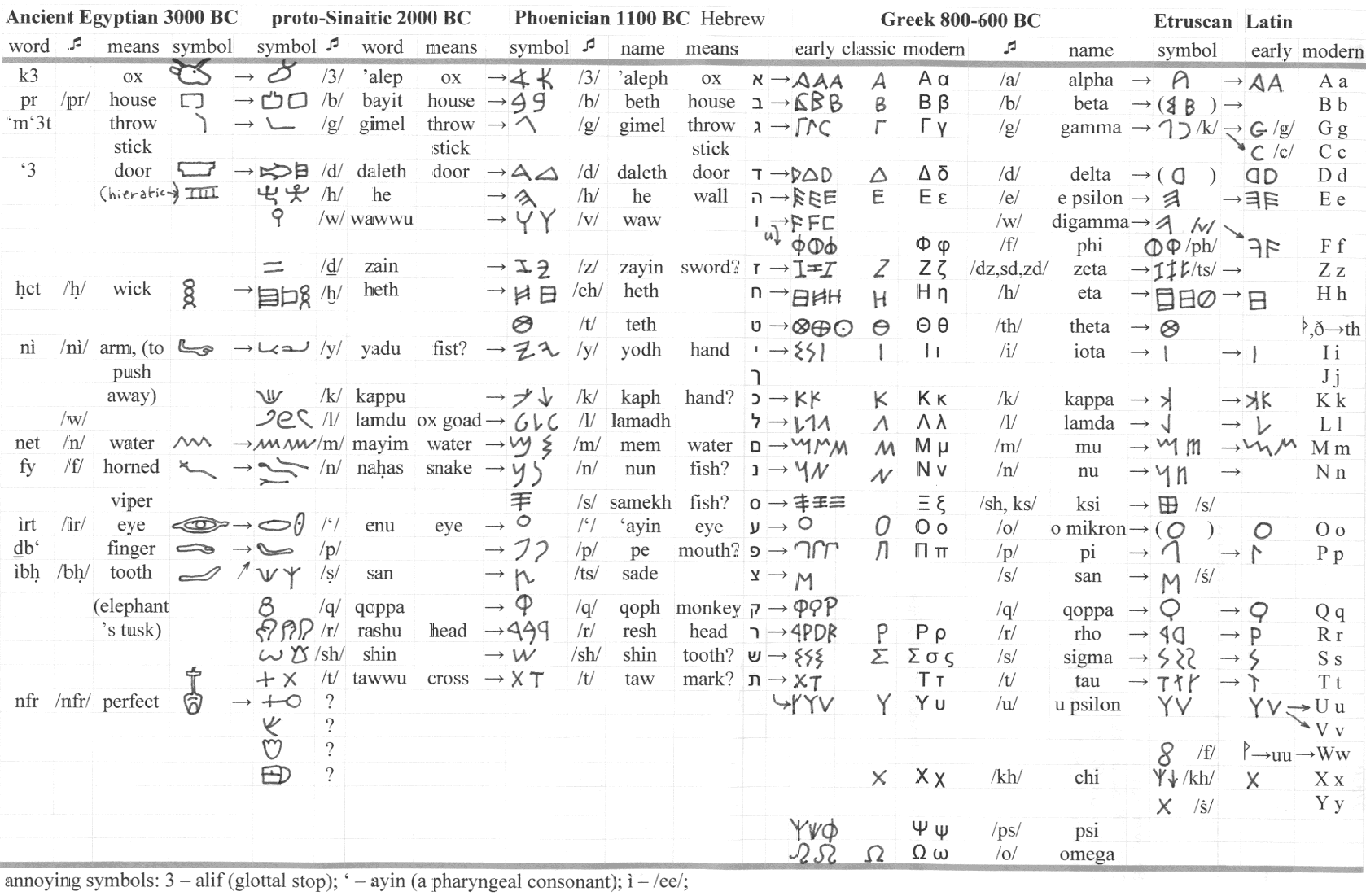
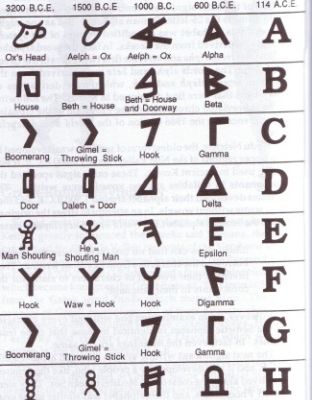
"The tomb is dated to c. 3250 BC and demonstrates that such writing (on bone and ivory labels) is a more advanced form of writing than was evident in Sumer at that date. It is argued, therefore, that the Egyptian writing system, which is in any case very different from the Mesopotamian, could not have been the result of influence from a less-developed system existing at that date in Sumer."
"The Study of Writing Systems", in The World's Writing Systems, ed. Bright and Daniels, p.3
Instead evidence implies that the opposite is true:
He concluded his presentation by noting similarities between specific Egyptian and Mesopotamian objects and suggesting that perhaps there is an initial influence of Egyptian writing on Mesopotamia because there are signs on Mesopotamian objects that are only "readable" from the standpoint of the Egyptian language, but not the Mesopotamian language.
"Too Much Stuff": Recent Finds in Predynastic Egypt
By Mario Beatty, Ph.D.

Here's a more simplified version of the comparisons.

"The tomb is dated to c. 3250 BC and demonstrates that such writing (on bone and ivory labels) is a more advanced form of writing than was evident in Sumer at that date. It is argued, therefore, that the Egyptian writing system, which is in any case very different from the Mesopotamian, could not have been the result of influence from a less-developed system existing at that date in Sumer."
"The Study of Writing Systems", in The World's Writing Systems, ed. Bright and Daniels, p.3
Instead evidence implies that the opposite is true:
He concluded his presentation by noting similarities between specific Egyptian and Mesopotamian objects and suggesting that perhaps there is an initial influence of Egyptian writing on Mesopotamia because there are signs on Mesopotamian objects that are only "readable" from the standpoint of the Egyptian language, but not the Mesopotamian language.
"Too Much Stuff": Recent Finds in Predynastic Egypt
By Mario Beatty, Ph.D.
C-Group Nubian Migration into Southwest Asia

Mesopotamia - Sumer
(Established 3,100 BC)

Ivan Van Sertima on Kemet vs Sumer

Scholars have proved that the population that comprised the culture that formed in the Sudan coined the "C-Group Nubians" (Dravidian and Niger-Congo speakers aka Kushites) who left the Sahara established the city of Kerma in Nubia beginning around 3,000 BCE. Numerous older scholars have made note and theories of these cultural and biological affinities as noted in the article below written by the Afrocentric "Boogeyman" Clyde Winters;

List of Sources
"Archaeological research has confirmed that cultural interaction existed between the contemporary civilizations of the 4th and 3rd millenia B.C. Extensive trade routes connected the Proto-Dravidians of the Indus Valley, with African people in Egypto-Nubia, and the Elamites and Sumerians. P. Kohl discovered that vessels from IVBI worshop at Tepe Yahya, have a uniform shape and design. Vessels sharing this style are distributed from Soviet Uzbekistan to the Indus Valley, and Sumerian, Elamite and Egyptian sites. (2) In addition, we find common arrowheads at Harappan sites, and sites in Iran, Egypt, Minoan Crete and Heladic Greece.
It appears that the locus for this distribution of cultural traditions and technology was the Saharan-Nubian zone or Kush. This would explain why the Sumerians and Elamites often referred to themselves as “ksh”. For example the ancient Sumerians called their dynasty “Kish”. The words “kish”, “kesh” and “kush” were also names for ancient Nubia-Sudan.
The Elamites also came from Kush. According to the classical writer Strabo, Susa the centre of the Elamite civilization was founded by Tithonus, king of Kush.
B.B. Lal has shown conclusively that the Dravidians came from Nubia and were related to the C-Group people who founded the Kerma dynasty.(3) They both used a common black-and-red ware (BRW) which Lal found was analogous to ceramics used by the megalithic people in India who also used analogous pottery signs identical to those found in the corpus of Indus Valley writing. (4)
Singh believes that this pottery spread from Nubia, through Mesopotamia and Iran southward into India.(5) The earliest examples of this BRW date to the Amratian period (4000-3500 B.C.).
This same BRW was found at the lowest levels of Harappan sites at Lothal and Rangpur. After 1700 B.C. This ceramic tradition spread southward into megalithic India.(6) It is also found in Uzbekistan and China.
It appears that the locus for this distribution of cultural traditions and technology was the Saharan-Nubian zone or Kush. This would explain why the Sumerians and Elamites often referred to themselves as “ksh”. For example the ancient Sumerians called their dynasty “Kish”. The words “kish”, “kesh” and “kush” were also names for ancient Nubia-Sudan.
The Elamites also came from Kush. According to the classical writer Strabo, Susa the centre of the Elamite civilization was founded by Tithonus, king of Kush.
B.B. Lal has shown conclusively that the Dravidians came from Nubia and were related to the C-Group people who founded the Kerma dynasty.(3) They both used a common black-and-red ware (BRW) which Lal found was analogous to ceramics used by the megalithic people in India who also used analogous pottery signs identical to those found in the corpus of Indus Valley writing. (4)
Singh believes that this pottery spread from Nubia, through Mesopotamia and Iran southward into India.(5) The earliest examples of this BRW date to the Amratian period (4000-3500 B.C.).
This same BRW was found at the lowest levels of Harappan sites at Lothal and Rangpur. After 1700 B.C. This ceramic tradition spread southward into megalithic India.(6) It is also found in Uzbekistan and China.
(Established 3,100 BC)

Ivan Van Sertima on Kemet vs Sumer
To start let's dismiss the Western myth of Sumeria being the "first" civilization on Earth. Professor Ivan Van Sertima does a wonderful job at showing the absurdity of comparing Sumer to ancient Hapi Valley civilization in age or "accomplishments". You will notice Eurocentric scholars will recite this fallacy as though it is a divine fact. This city-state in between the Tigris and Euphrates came into existence as a result of the migrations during the first desertification phases of the ancient African Sahara around the late 7th millennium B.C.E. Keep in mind that this is only the agricultural foundation of what would by about 5,000 years later become a dynastic civilization like that first seen in Africa with Nubia. Notice in the map below how the settlement sites during the later period during the 2nd desertification phase approaches the Kemetic border on the Sinai Peninsula. Evidence proves that these African migrants did not stop at an invisible continental border but instead settled into the adjacent Fertile Crescent, and extended eastward into Eurasia from there. These Africans would of course eventually settle and establish Sumeria.


Bio-Cultural Analysis
"First there is the Eurafrican .. In ancient times, this type is found in Mesopotamia and Egypt and may be compared with the Ombe Capelle skull. It is possibly identical with men who lived in the high desert west of the Nile in paleolithic times.." (-Penniman, T.K. "A Note on the Inhabitants of Kish.." Excavations at Kish, 1923-33 Vol 4. pp 65-72)
Notice the ridiculous term "EuraAfrican" (to suggest degrees of white admixture) is used to describe indigenous African physical diversity in the older anthropological studies as noted earlier. Those Africans in the "High desert west"/Western Kemetic Saharan Desert were Niger-Congo speakers and Dravidians (who originated in Africa and now live in India) who have "narrow"/gracile facial features. Genetically recessive scientist use to lie and claim that those gracile facial features indicated that they were mixed race. Those features also exist in the Cushitic populations. It was mentioned earlier leading Bio-Geneticist SOY Keita has dismantled those misconceptions that these indigenous groups are the result of admixture from Caucasoids. The study below conducted less than a decade ago confirms that those remains in the Egyptian western desert were in fact black-melaninated Africans.
"..the Qarunian (Faiyum) early Neolithic crania (Henneberg et al. 1989; Midant-Reynes 2000), and the Nabta specimen from the Neolithic Nabta Playa site in the western desert of Egypt (Henneberg et al. 1980) - show, with regard to the great African biological diversity, similarities with some of the sub-Saharan middle Paleolithic and modern sub-Saharan specimens....This affinity pattern between ancient Egyptians and sub-Saharans has also been noticed by several other investigators..This finding is in agreement with morphological data that suggest that populations with sub-Saharan morphological elements were present in northeastern Africa, from the Paleolithic to at least the early Holocene... "
--Ricaut and Walekens (2008) 'Cranial Discrete traits..' Human Biology, 80:5, pp. 535-564
The ancient Mesopotamian remains are identical to those found in the Paleolithic-Neolithic "Egyptian" Western dessert, and we can further read that the "ancient Egyptians" of the Western desert were the same as modern day "Sub Saharan Africans". Notice the statement that the ancient Kemites are consistently regarded as "Negroid" by other researchers. This correlates with the Kushite foundation of the civilization that was noted by archaeologist John Baldwin. He was the archaeologist who first deciphered the Conifer script of Mesopotamia and was certain that Nubians founded this Western Asian civilization.
"After deciphering the cuneiform script and researching ancient Mesopotamia for many years Henry Rawlinson (1810-1895) discovered that the founders of the civilization were of Kushite (Cushite) origin. He made it clear that the Semitic speakers of Akkad and the non-Semitic speakers of Sumer were both Black people who called themselves sag-gig-ga or “Black Heads.”
John Baldwin wrote in his book “PreHistoric Nations” (1869): “The early colonists of Babylonia were of the same race as the inhabitants of the Upper Nile.”
and
Chandra Chakaberty “A Study in Hindu Social Polity” - “based on the statuaries and steles of Babylonia, the Sumerians were “of dark complexion (chocolate colour), short stature, but of sturdy frame, oval face, stout nose, straight hair, full head; they typically resembled the Dravidians, not only in cranium, but almost in all the details.”
and
Chandra Chakaberty “A Study in Hindu Social Polity” - “based on the statuaries and steles of Babylonia, the Sumerians were “of dark complexion (chocolate colour), short stature, but of sturdy frame, oval face, stout nose, straight hair, full head; they typically resembled the Dravidians, not only in cranium, but almost in all the details.”

The Deffufa has been suggested to be dated as old as 7,500 BCE. The Kerma culture has been said to have formed around the ancient structure around 3,000 - 2,500 BCE.


and then migrated into the Arabian Peninsula and throughout the Fertile Crescent (which were known as extensions of Kush) to establish the Elamite and Indus Valley civilizations. It was only around 2,600 B.C.E. when Mesopotamia's first dynasty was established by these Kushite migrants.







Ashoka the Great

Dr. Clyde Winters points out that the ancient Indus Valley Harpappan Script is identical to the 5,000 year old proto-Saharan script that was used by the Mande speakers (dated as far back as 3,000 BC) who brought it as they migrated from the drying Sahara into the fertile crescent heading east all the way to China.
link
The study above regarding the crania of Indus Valley remains notes that they fit closely with East African and or Nubian cranium. More confirmation of this greater Nubian empire that extended into India, that modern Western scholars like to have amnesia about. Many Dravidian scholars have noted that they originated in Africa for decades prior to "Afrocentrism". These Dravidians also tell of a sunken continent in the Indian Ocean from which they came, and or transmigrated to and from Africa through. Western scholars cover their ears to these facts (I say facts, because the chain of islands in the Indians ocean make it's existence clear). This was a highly innovative, peaceful and beautiful civilization created by a mixture of Tamil and Bantu-Niger-Congo speaking African migrants intermingling with the pre existing Twa and Australoid populace.
This civilization was destroyed by invading "Aryans" who ravaged the greater region from 1,500 to 1,200 BC (detailed by Dr. Ivan Van Sertima in the clip below in the Aryan section). The mulatto offspring of the Dravidians and the "Aryans" often feel obligated to protect the terrorist legacy of their "Aryan" parents, and insist that the coming of those Devils had nothing to do with the destruction of the civilization all in the same period (which is a pattern). Some of the original inhabitants resisted the invaders migrating further north and east, and others were subjugated into the bottom of the caste system that still goes on today. The more melaninated southern Indians Dravidians still have respect towards their ancient African origins. Some Indians of higher caste so delusional about the situation that occurred. They will regard acknowledging this obvious scenario as "outdated"
In the video below everyone can see how delusional these "higher caste" Indians are about their "Aryan" involvement in ancient Indus Valley.
1
Genetic Evidence
Several recent genetic studies confirms an eastward migration migration from Africa into Asia, which involved genetic markers typical of Niger-Congo speakers. The samples from the study in the link identifies two paternal lineages. One that predominates in Niger-Congo populations of Mali (Dogon) and in another found mostly in East African Cushitic populations that was carried them into south Asia The African lineages that were carried were E1b1 and E1a, which were identified in Neolithic Indus Valley (starting around the 8th millennium BC) remains. The earliest populations of the region were characterized were the Twa followed by Australoid however, as the anthropolgoical evidence points out in the following passage. The elements were simply infused into the more recent African migrants who came following the drying the Sahara.
link
Anthropological Evidence
"The Chanhu-daro burial is a unique funerary
practice of the Indus Civilization, unencountered at other Indus
sites; 2) the cranium’s phenotypic features are outside the
range of morphological variation present in the macropopulations of the Indus Civilization, but fit closely with those of individuals of East African ancestry, possibly Nubian or Ethiopianhe Chanhu-daro cranium sought to fit it into one of the racial classifications current during the first half of the last century. What is relevant to Krogman’s and Sassaman’s study is not that they placed Chanhu-daro with a “Proto-Mediterranean type” and compared it to other specimens assigned to this racial category, namely the skeletons from Mohenjo-daro and a Sialkot (a single skull collected in 1912 in the western Punjab) as well as specimens from Iran and the Near East. Rather it is significant that these American anthropologists recognized that the Chanhu-daro cranium was not a “perfect fit” within the sorting criteria of cranial traits used to define the macropopulations of the Indus Valley. They wrote that the specimen “is Negroid in its low flattened vault, in its broad nose with its “traughing” or slight sulcus praenasalis, in its diminished sub-nasal height and low orbits, and possibly its (cranial) length and occipital fullness” (Krogman & Sassaman, 1943)...As other racial classifications for the populations of the Indian subcontinent emerged, a persisting them was that a “Negroid” or “Negritoid (pygmy) racial element was present, and was especially evident in southern India."
link
"The Chanhu-daro burial is a unique funerary
practice of the Indus Civilization, unencountered at other Indus
sites; 2) the cranium’s phenotypic features are outside the
range of morphological variation present in the macropopulations of the Indus Civilization, but fit closely with those of individuals of East African ancestry, possibly Nubian or Ethiopianhe Chanhu-daro cranium sought to fit it into one of the racial classifications current during the first half of the last century. What is relevant to Krogman’s and Sassaman’s study is not that they placed Chanhu-daro with a “Proto-Mediterranean type” and compared it to other specimens assigned to this racial category, namely the skeletons from Mohenjo-daro and a Sialkot (a single skull collected in 1912 in the western Punjab) as well as specimens from Iran and the Near East. Rather it is significant that these American anthropologists recognized that the Chanhu-daro cranium was not a “perfect fit” within the sorting criteria of cranial traits used to define the macropopulations of the Indus Valley. They wrote that the specimen “is Negroid in its low flattened vault, in its broad nose with its “traughing” or slight sulcus praenasalis, in its diminished sub-nasal height and low orbits, and possibly its (cranial) length and occipital fullness” (Krogman & Sassaman, 1943)...As other racial classifications for the populations of the Indian subcontinent emerged, a persisting them was that a “Negroid” or “Negritoid (pygmy) racial element was present, and was especially evident in southern India."
link
This civilization was destroyed by invading "Aryans" who ravaged the greater region from 1,500 to 1,200 BC (detailed by Dr. Ivan Van Sertima in the clip below in the Aryan section). The mulatto offspring of the Dravidians and the "Aryans" often feel obligated to protect the terrorist legacy of their "Aryan" parents, and insist that the coming of those Devils had nothing to do with the destruction of the civilization all in the same period (which is a pattern). Some of the original inhabitants resisted the invaders migrating further north and east, and others were subjugated into the bottom of the caste system that still goes on today. The more melaninated southern Indians Dravidians still have respect towards their ancient African origins. Some Indians of higher caste so delusional about the situation that occurred. They will regard acknowledging this obvious scenario as "outdated"
"Methodological issues in the Indo-European debate - Michel Danino July 2019
Abstract
The Indo-European debate has been going on for a century and a half. Initially confined to linguistics, race-based anthropology and comparative mythology, it soon extended to archaeology, especially with the discovery of the Harappan civilization, and peripheral disciplines such as agriculture, archaeometallurgy or archaeoastronomy. The latest entrant in the field, archaeogenetics, is currently all but claiming that it has finally laid to rest the whole issue of a hypothetical migration of Indo-Aryan speakers to the Indian subcontinent in the second millennium BCE. This paper questions the finality of this claim by pointing to inherent limitations, methodological issues and occasional biases in current studies as well as in the interpretation of archaeological evidence."
Abstract
The Indo-European debate has been going on for a century and a half. Initially confined to linguistics, race-based anthropology and comparative mythology, it soon extended to archaeology, especially with the discovery of the Harappan civilization, and peripheral disciplines such as agriculture, archaeometallurgy or archaeoastronomy. The latest entrant in the field, archaeogenetics, is currently all but claiming that it has finally laid to rest the whole issue of a hypothetical migration of Indo-Aryan speakers to the Indian subcontinent in the second millennium BCE. This paper questions the finality of this claim by pointing to inherent limitations, methodological issues and occasional biases in current studies as well as in the interpretation of archaeological evidence."
In the video below everyone can see how delusional these "higher caste" Indians are about their "Aryan" involvement in ancient Indus Valley.
1
The absurdity in their analysis of the destruction of the Indus Valley civilization is illustrated here by scholar Manu Ampim;
Start around : 1:15:00
Start around : 1:15:00
African Migration Into the Levant & the Mediterranean
(Details Both the early Saharan migrants and the later Dynastic Kemetic Migrants)
Genetic studies have proven that the founding neolithic populations for the Levant region including ancient Canaanite, Phoenicia, Anatolia, and Greek civilizations were the result of those same waves of African migrants (nicknamed "Basal Eurasians") starting with the Natufians. The second population wave were the ancient African Saharan migrants, who founded those civilizations in those regions around the Mediterranean coast around the 3rd millennium BCE. These civilizations flourished prior to the middle of the second millennium. The obvious reason for their collapse being the invasions and constant warfare with random nomadic "Aryan" hoards who were militarily trained (hence how they even got the name "Aryan") upon their release from the Caucus. The result of the mixing of the races (the original blacks being civilized and the later whites being savages) created fixed mulatto races first in the regions adjacent to the Caucus. As a result of that mixing we see cultural devolution from innovative relatively peaceful Africoid civilizations into a series of barbarous states such as the Hittite, Babylon Assyrian, Persian etc civilizations. In many of these early mixed race civilizations however it is clear from visual artistic evidence that the black elements of the civilizations were still at the head of many states in the regions. For this reason the Kemites early on to an extent were able to establish lines of diplomacy with their black rulers. (Details Both the early Saharan migrants and the later Dynastic Kemetic Migrants)
One thing to note about the descendants of these civilizations is that many of them are almost white, and want to be white (as they see that white is equated with power). They also brag about nothing more than the war campaigns of these "civilizations", and from the success of those barbarous acts they feel validated. It's fascinating, because Hapi Valley civilization is famed for it's actual civilization, including it's philosophy centered around Ma'at meaning harmony and or understanding. It's the complete opposite of what the later barbarous mixed race states of Asia and Europe came to be known for. Their extremely short lived "glories" of war on the other hand no matter how barbaric tend to be the only thing that these later non African states are known for. These influence of the non black civilizations upon their intrusion into black affairs did not enrich the civilizations in any way shape or form. These partially black and white states of Western Eurasia unlike fully black African states did not last thousands of years, but nothing more than mere centuries. That is the tell tell sign of the futility of their existence. They are proud of being low frequency beings. They adhere to that legacy, and feel that that legacy makes them superior to us. That is a Devil's logic, and it should be rejected by civilized people.
The third wave of Africans acted essentially as a 25th Dynasty to regions of the Mediterranean. According to Dr. Ben among other scholars, an army of ancient Kemites lead by pharaoh Thutmoses III conquered and settled in the Levant and Europe, where they reestablished the high cultures of the earlier Saharan African migrants (Pelasgians) after the collapse of the Minoan civilization, and the emergence of the Dravidian lead Mycenaean empire lasting for 500 years until around 1,200 BCE. The Achaeans were the last Africans to wrestle control of the region after defeating the Mycenaeans. It was around this time that nomadic albinoid populations from the Caucus known as the Sea Peoples had overran them and plunged the civilization into their own respective dark ages (Greece for example). The Classical Greek period thus was a fixed mulatto race (not a white civilization), and began after the first millennium BCE. It lasted only around 700 years until succumbing to the Roman empire. So much for any all white "civilizations".

Phoenicia & Carthage
(Established Phoenicia 2,700 BC & Carthage 10th Century BC)

The Phoenician City of Carthage


The Phoenician City of Carthage
Carthage dominated the Mediterranean before Rome was anything. The Romans modeled their entire city-state from Carthage, and as typically with genetically recessive people or those who find themselves heavily influenced behavior, the Romans obsessed over destroying that which it had came/was modeled from)

The Phoenicians civilization were essentially a satellite colony of ancient Kemet. It's boundaries ranged along the Mediterranean coast around Kemet all the way into Western Europe, and the Americas. It was a Phoenician queen who founded what some scholars have consider to be the last stronghold of Africa in ancient times which was Carthage around the 9th century BC. Carthage was the original Rome, before it was raised to ground by Rome. The Phoenicians are the group of Africans who taught the genetically recessive Greek Dorians how to read and write after they had defeated the Achaeans. Below is a coin from Carthage that many scholars have declared to be Hannibal.


Bio-Cultural Analysis

Nations Negres et Culture - Dr. Cheikh Anta Diop
"And Pittard concluded the subject with the description of the members of the Carthaginian elite as follows: Other bones found in the Punic Carthage taken to the Museum of Lavigerie, come from subjects discovered in particular sarcophagus and in all probability belong to the Carthaginian elite. The skulls are almost dolichocephalic and with a rather short face’"
Genetic Evidence
(Genetic proof of Carthage being characterized by a Niger-Congo population)
The sub-Saharan African admixture observed in the non-Ogliastra samples could be mediated through an influx of migrants from North Africa before the Arab expansion, for example, during the eras of trade relations and occupations from the Phoenicians, Carthaginians, and Romans (~700 B.C. to ~200 B.C., see Dyson and Rowland10).
link
Phoenician man
"And Pittard concluded the subject with the description of the members of the Carthaginian elite as follows: Other bones found in the Punic Carthage taken to the Museum of Lavigerie, come from subjects discovered in particular sarcophagus and in all probability belong to the Carthaginian elite. The skulls are almost dolichocephalic and with a rather short face’"
Genetic Evidence
(Genetic proof of Carthage being characterized by a Niger-Congo population)
The sub-Saharan African admixture observed in the non-Ogliastra samples could be mediated through an influx of migrants from North Africa before the Arab expansion, for example, during the eras of trade relations and occupations from the Phoenicians, Carthaginians, and Romans (~700 B.C. to ~200 B.C., see Dyson and Rowland10).
link
Phoenician man

Ancient Phoenician honoring their Kemetic roots



The Pelasgian civilizations brought about the zenith of the entire Greek story. When these early Africoid populations dominated is when all of the Greek myths came to, and was the height of Greek arts, science, mathematics, etc. Over 3,500 years ago, the Phoenicians arrived in what would become Greece bringing with them the Hapi Valley (Nubian) writing system.
Aegean Civilization
(Established 3,200-2,700-1,900-800 BC)

Hathor in Greece
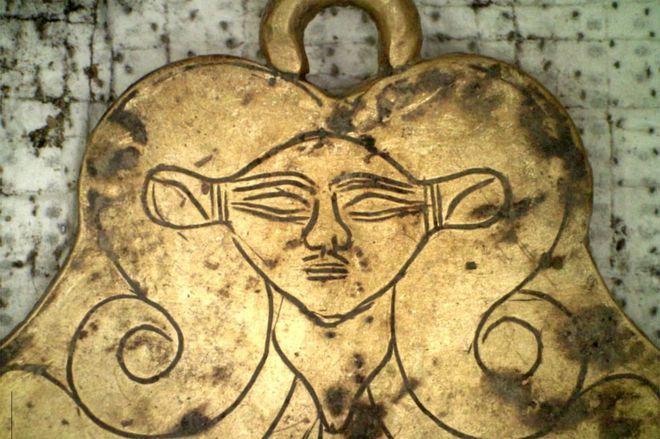
2019 Archaeological discovery of the ancient Kemetic deity Hathor being depicted on jewelry recently unearthed in an ancient Greek tomb. Thus further confirming the ancient Hapi Valley origins of Aegean civilization.
Palesgian art

Ancient Saharan art

As explained earlier the base population for the ancient Greeks were the Natufians. On top of those African migrants from another source, the Sahara desert created the basis for the ancient Minoan civilization in the 3rd millennium BC. These Africans soon spread onto mainland Greece and established the Mycenaean civilization.
Bio-Cultural Analysis
DNA analysis prove that the genetic origins of Minoan and the ancient Mycenaean civilizations were genetically linked to the Africoid populations who descended from the original "Negroid" Natufian population who spread from Africa into Canaan and northward into Turkey.
"DNA analysis has revealed that two ancient civilizations in Greece were related and shared common ancestors that travelled from modern day Turkey.
Scientists believe that the Minoans and Mycenaens were descended from early Neolithic farmers who migrated from Anatolia to Greece and Crete.
"
link
A quick rehash on the early "Neolithic" farmers/Natufians of the Levant.
"“The surprise is that the Neolithic peoples of Europe and their Bronze Age successors are not closely related to the modern inhabitants... It is a further surprise that the Epipalaeolithic Natufian of Israel from whom the Neolithic realm was assumed to arise has a clear link to Sub-Saharan Africa.”
(Brace et. al. (2006). The questionable contribution of the Neolithic and the Bronze Age to European craniofacial form."
and
"Other studied populations belong to the old Mediterranean substratum, which has been present in the area since pre-Neolithic times. This study indicates a higher proportion of Iberian than Arab ancestry in Tunisian Berbers, which is of value in evaluating the evolutionary history of present-day Tunisians. Greeks seem to share genetic HLA features (Chr 6) with Sub-Saharans. The relatedness of Greeks to Sub-Saharans has been confirmed by other studies based on chromosome 7 genetic markers.
Ann Hum Biol. (2010 Jul 29).HLA class I and class II polymorphisms in Tunisian Berbers.
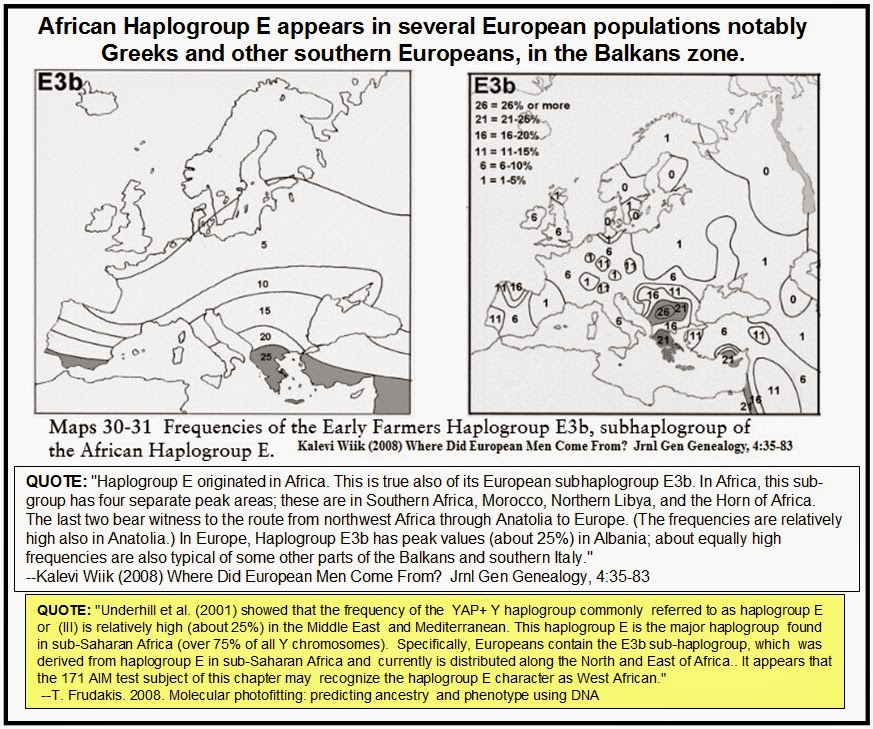
Scientists believe that the Minoans and Mycenaens were descended from early Neolithic farmers who migrated from Anatolia to Greece and Crete.
"
link
A quick rehash on the early "Neolithic" farmers/Natufians of the Levant.
"“The surprise is that the Neolithic peoples of Europe and their Bronze Age successors are not closely related to the modern inhabitants... It is a further surprise that the Epipalaeolithic Natufian of Israel from whom the Neolithic realm was assumed to arise has a clear link to Sub-Saharan Africa.”
(Brace et. al. (2006). The questionable contribution of the Neolithic and the Bronze Age to European craniofacial form."
and
"Other studied populations belong to the old Mediterranean substratum, which has been present in the area since pre-Neolithic times. This study indicates a higher proportion of Iberian than Arab ancestry in Tunisian Berbers, which is of value in evaluating the evolutionary history of present-day Tunisians. Greeks seem to share genetic HLA features (Chr 6) with Sub-Saharans. The relatedness of Greeks to Sub-Saharans has been confirmed by other studies based on chromosome 7 genetic markers.
Ann Hum Biol. (2010 Jul 29).HLA class I and class II polymorphisms in Tunisian Berbers.

The passage below contextualizes the usurping of these originally Africoid civilizations by the pale nomads when they leave the Caucus mountains and wonder into Europe.
The Greeks often called the first inhabitants of Greece Pelasgians. The Greek writers claimed that Pelasgus, the great ancestor of the Pelasgians was the first man. The Pelasgians were a combination of diverse Black tribes which included the Achaeans , Kadmeans, and Leleges. The Garamantes were also often called Pelasgians by some classical writers. Strabo said "that the Pelasgi, as indeed the most ancient nation, were diffused through all Greece, and especially among the Aeolians".
Herodotus referred to the Pelasgians as "venerable ancestors". He said that the first Athenians "they were Pelasgi, the later possessing the country now designed Hellas". The Pelasgian founding of Athens is also noted by Plutarch in Theseus 12, and Ovid in Metamorphosis vii.402ff. According to Herodotus vii.91, the Pelasgians also founded Thebes in Europe. Pausanias, noted that "The Arcadians make mention of Pelasgus as the first person who existed in their country. From this king the whole region took the name Pilasgia". Hopper noted that the Pelasgians founded Attica.
The Black immigrants from Canaan (Saharan-Kushites) were also settled in the Aegean at Argolis. They called themselves the "Sons of Abas". Many of the Melampodes later took part of Argolis away from the Canaanites.
The earliest Greek alphabet was made by the Pelasgians, it was lost and later reintroduced by Kadmus to Boeotia. Another Pelasgian, Evander of Arcadia introduced writing to the Italians. This script was used to make the first fifteen characters of the Latin script according to Pliny and Plutarch."
(migration of Dorians-Ioans/Whites from the Caucus entering Greece)

"By 1300 BC, the Dorian tribes (Indo - Europeans) invaded Greece and defeated the Achaeans. The Dorian conquest of Mycenae led to Crete becoming a major center of Achaean civilization. The Dorians learned the art of writing from the Phoenicians....The Aryan-Greeks adopted the language of the Pelasgians and Egyptians. The linguistic evidence shows that there was a differentiation of Greece into East Greek and West Greek. The Black Greeks spoke East Greek (Achaioi or Achaean). West Greek was spoken by the Dorian or Aryan Greeks. The earliest Aryan tribe called Ionians spoke a dialect of East Greek called Aeolic.
Over 40% of Indo - European words and over 50% of ancient Greek Words were African in Origin


might be asking "well what about the "Caucasian" people", where were they at? Many waves of melaninated people were in Europe long before the nomadic Caucasian tribes were led from the Caucus mountains (hence "Caucasians") during a mere 2,000 B.C. bringing them into those already established areas.
As you've just read Caucasians could not even talk nor had any other form of communication between one another. These recent cave people subsequently plunged the advanced state of early Greece into the Greek Dark Ages. The civilization never fully recovered to return to this high state. This was the fate of all civilizations that they entered into.








The Tamahu/The Whites
After 2,000 BC (around 1,400 - 1,200 BC) is the introduction of Aryans/Indo-European/Tamahu/Pale folks in general into the World (including so called "East Asians"). These nomadic hordes usurped and then destroyed every pre-existing black civilization located in Asia and Europe, and finally around the 6th century BCE they broke into Africa via the invasion of Kemet under the Persian guise eventually sacking Thebes in Southern Kemet. It is their hidden legacy that their own scholars have reluctantly announced publicly (check Fergi cited at the beginning of this section). These savages were the World's original terrorist as noted by ancient Kemetic text (depicted in the "Tamahu" section in the next post). They destroyed an entire phase of high civilization with their unwanted presence, and never replaced it. White scholars (shown below) have noted this about their own legacy, so no need to assume that hate is the motive for presenting this truth.
F. Champollion who deciphered the hieroglyphs wrote this about the what he found written about the humble origins of "whites".


-- Champollion"
and
F. Champollion who deciphered the hieroglyphs wrote this about the what he found written about the humble origins of "whites".


"And we learn at the same time the great geographical or ethnographica divisions established during that early epoch. Men led by Horus, the shepherd of the peoples, belong to four distinct families. The first, the one closest to the god, has a dark red colour, a well-proportioned body, kind face, nose slightly aquiline, long braided hair, and is dressed in white. The legends designate this species as Rt-en-ne-Rme, the race of men par excellence i.e. the Egyptians.
They can be no uncertainty about the racial identity of the man who comes next: he belongs to the Black race, designated under the general term, Nahasi. The third presents a very different aspect; his skin colour borders on yellow or tan, he has a strongly aquiline nose, thick, black pointed beard and wears a short garment of varied colours; these are called, Namou.
Finally, the last one is what we call flesh-coloured, a white skin of the most delicate shade, a nose straight or slightly arched, blue eyes, blond or reddish beard, tall stature and very slender clad in a hairy ox-skin, a veritable savage tattooed [see my article on European Goths] on various parts of his body, he is called, Tamahou.
I hasten to seek the tableau corresponding to this one in the other royal tombs and, as a matter of fact, I found it in several. The variations I observed fully convinced me that they had tried to represent here the inhabitants of the four corners of the earth, according to the Egyptian system, namely;
The inhabitants of Egypt which, by itself formed one part of the world
The inhabitants of Africa proper: Blacks
Asians
Finally [and I am ashamed to say so, since our race is the last and the most savage in the series]. Europeans who, in those remote epochs, frankly did not cut too fine a figure in the world
-- Champollion"
and
"The Mediterranean Race
"(1.) The primitive populations of Europe, after Homo Neandertkalensis, originated in Africa; these constituted the entire population of Neolithic times.
(2.) The basin of the Mediterranean was the chief centre of movement whence the African migrations reached the centre and the north of Europe.
(8.) The two classic civilisations, Greek and Latin; were not Aryan, but Mediterranean. The Aryans were savages when they invaded Europe: they destroyed in part the superior civilisation of the Neolithic populations, and could not have created the Greco-Latin civilization""
G. SERGI.
ROME, Feoruary, 1901."
(2.) The basin of the Mediterranean was the chief centre of movement whence the African migrations reached the centre and the north of Europe.
(8.) The two classic civilisations, Greek and Latin; were not Aryan, but Mediterranean. The Aryans were savages when they invaded Europe: they destroyed in part the superior civilisation of the Neolithic populations, and could not have created the Greco-Latin civilization""
G. SERGI.
ROME, Feoruary, 1901."

(Between 16th - 10th century BC Caucasian hoards leaving the caves of the Caucus overran and intermixed and overturned every civilization in Eurasia.
What was Their Strategy?
"First, they settles in a country in small groups and were partly assimilated. Over a period of time their numbers increased. Once they reach a numerical majority they joined forces with other Indo-European speaking groups to militarily overthrow the original inhabitants in a specific area and take political power. Since these communities occupied by the blacks often saw themselves as residents of a city-state, they would ignored the defeat of their neighbors. This typified their second form of invasion of the countries formerly ruled by the Proto-Saharans/Kushites/Blacks.
Blacks have failed even today to recognize that even though whites are highly nationalistic and engaged in numerous fratricidal wars, they tend to unify temporarily to defeat non-European people. As a result in case where the Blacks have been politically organized into states or Empires, rather than isolated city-states, the large political units have lasted for hundreds of years as typified by ancient Egypt, Axum, Mali and ancient Ghana.") - C Winters
Among other things detailed in the full section on the Tamahu in the next post.
Their Migrations

The Indo - Aryan Invasions
The Destruction of Mesopotamia and The Indus Valley Civilization

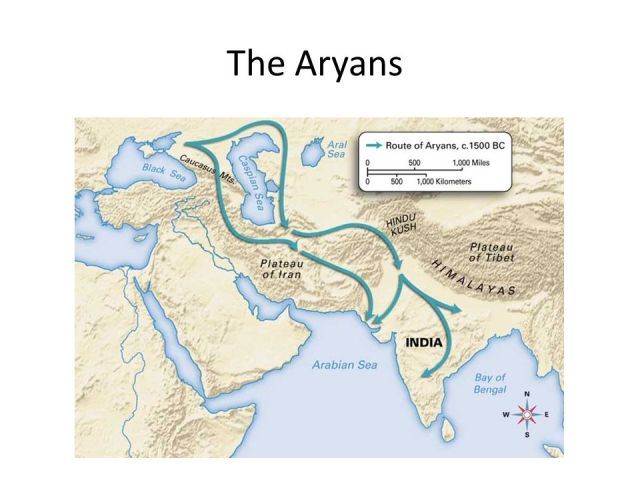
Today the fixed race mulattoes who now inhabit the areas in which these ancient civilizations once flourished like to pretend that their misceginated appearance is something that's "indigenous" to the area rather than being the result of the original melaninated Africoid and recessive people interbreeding. This is so they can deny their Africoid origin (they often obsess over being a proxy of "white"). In reality these Asiatic and European areas in which these civilizations flourished were overran by genetically recessive populations once they left the Caucus mountains. They mixed in with the aboriginal melaninated Africoid people and created fixed race mulattoes throughout those regions. Ivan Van Sertima explains how this happened to Mesopotamia and the Indus Valley civilizations (16-22 min marks).
The Sea Peoples

The Kemites also identified them as the "Sea Peoples" During One Phase of Interaction
Dr. Ivan Van Sertima describes what happened to the originally black civilizations in Southwest Asia as the different streams of Indo-Aryans poured out of the Caucus mountains, and invaded hitting Mesopotamia and Indus Valley. Around the same time another wave of genetically recessives had attacked the Mediterranean with full force known as the Sea Peoples.
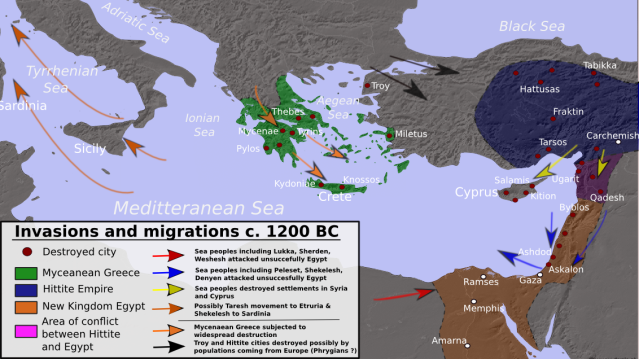
"In this context it is likely that Bronze Age events may have facilitated the southward diffusion of populations carrying northern and central European biological elements and may have contributed to some degree of admixture between northern and central Europeans and Anatolians, and on a larger scale, between northeastern Mediterraneans and Anatolians. Even if we do not know which populations were involved, historical and archaeological data suggest, for instance, the 2nd millennium B.C. Minoan and later Mycenaean occupation of Anatolian coast, the arrival in Anatolia in the early 1st millennium B.C. of the Phrygians coming from Thrace, and later the arrival of settlers from Macedonia in Pisidia and in the Sagalassos territory (under Seleucid rule). The coming of the Dorians from Northern Greece and central Europe (the Dorians are claimed to be one of the main groups at the origin of the ancient Greeks) may have also brought northern and central European biological elements into southern populations. Indeed, the Dorians may have migrated southward to the Peloponnese, across the southern Aegean and Create, and later reached Asia Minor."
F. X. Ricaut, M. Waelkens. (2008). Cranial Discrete Traits in a Byzantine Population and Eastern Mediterranean Population Movements Human Biology - Volume 80, Number 5, October 2008, pp. 535-564
Everything about these people and their history (which is why it is not publicly taught) indicates that they are mythical creatures known as the "Devil" in the Bible and Koran.These pale nomadic hoards single handedly brought an end to Bronze Age civilizations across the Mediterranean coast overrunning the Anatolian region, Phoenicia, Canaan, Cyprus, and finally halted by the Kemites lead by Ramses III. They not only destroyed these once flourishing civilizations of the region, but as noted in the citation above they brought the "white" element to the Africoid populations formulating "Semitic" populations of the Near East. Western scholars like to pretend to not know that the Sea Peoples were white savages who had recently left the Caucus for obvious reasons. The video below is a classic example of deception in Western history narrative. CA Diop put the true context of the Sea Peoples in African Origins of Civilization (the exert about Ramses III and the Sea peoples is in my next post)
On a side note - It's interesting that genetically recessive supremacist organizations today, like the KKK will attempt to flip the script about race mixing, and pretend that the genetically recessive element was the innovator of civilization, and then a later black element created a mongrelized group that destroyed the progressiveness of the civilization...The pale Devils are very aware of the truth, and are only playing mind games with those who are ignorant of it.
More of this is discussed in the next post.
West Africa - Mande Civilizations
Dhar Tichitt
(Established 2,000 BC)
Dhar Tichitt
(Established 2,000 BC)
Dhar Tichitt is the ultimate proof of the Saharan African source for all ancient civilizations. In every direction that these Saharan migrants went civilization followed, and when they went into Saharan West Africa that is seen in the little mentioned state of Dhar Tichitt. This West African civilization was prior to the 6th century BC, which is when the main migration of Niger-Congo speakers left the Hapi Valley for interior regions of Africa. There is a common retort by white supremacist saying "focus on West African history". This is to imply that our people in the Western hemisphere are only from "West African" lineages, in an attempt to say that Niger-Congo speakers have always lived in West Africa or other interior regions of the continent. This is said out of ignorance, by some and a deliberate attempt to disconnect us from our earlier genesis (prior to the 6th century BC) in Northeast Africa. One of the main facts to make these racist shut up forever is that most of what is "tropical" West Africa was uninhabitable swamp land until the 2nd millennium BC (McIntosh & McIntosh 1981 ,1986). This little known fact is another pivotal reason why Christoper Ehret's 12,000 BP date for the migration into West Africa from Nubia is false. The other argument that they'll have to make is that we are all Mande. The Mande speakers broke away from the main body of Niger-Congo speakers in Nubia early on, and migrated into the Western Saharan regions.


This was an ancient Western Saharan civilization that was created as a result of the Soninke people of the Mande branch of Niger Congo speakers who lived in Western regions of the Sahara intermingling linguistically with Nilotes during it's fertile period, and as a result of desertification this branch of Niger-Congo speakers migrated into Northern-West Africa over 4,000 years ago. To the racist who like to imply that West Africa was underdeveloped they will shut up after being made aware of the fact that This little known advanced literate ancient West African civilization is older than anything in Europe! These Africans were apart of the Ma-Confederation/Kushites and the existence of this thriving civilization with the exact same linguistic and cultural traits seen throughout the Near East and all the way to China proves that Niger-Congo speakers were at the heart of this Kushite faction.





This was an ancient Western Saharan civilization that was created as a result of the Soninke people of the Mande branch of Niger Congo speakers who lived in Western regions of the Sahara intermingling linguistically with Nilotes during it's fertile period, and as a result of desertification this branch of Niger-Congo speakers migrated into Northern-West Africa over 4,000 years ago. To the racist who like to imply that West Africa was underdeveloped they will shut up after being made aware of the fact that This little known advanced literate ancient West African civilization is older than anything in Europe! These Africans were apart of the Ma-Confederation/Kushites and the existence of this thriving civilization with the exact same linguistic and cultural traits seen throughout the Near East and all the way to China proves that Niger-Congo speakers were at the heart of this Kushite faction.







It again needs to be mentioned that this early ancient West African civilization was also literate! The Manding script which is found in the ancient Sahara at least as far back as the 4th millennium BC also shares morphological traits seen as far east as India (among the original inhabitants the Dravidians who also once co inhabited the once fertile Sahara) and China.
Wagadou "Ancient Ghana"
(700AD - 1240 AD)

The people who created this civilization were ancestral to that that is known today as "ancient Ghana", but was called "Wagadou" in ancient times. This civilization carried the torch of high civilization after the fall of Meoritic Nubia. These Mande speakers also traveled to America into the Olmec civilization.
The spread of Islam into West Africa

Mali Empire
(1230 AD-1670 AD)

Mansa Musa of Mali was the richest man in recorded History

According to Mansa Musa's words as recorded by an Egyptian merchant on his famous voyage to Mecca, he ascended to the thrown in 1311 when his brother Abu Bakr III sailed to Mexico with a fleet of thousands of ships. The Mande of course were in America much earlier than the height of the Mali empire. The Olmec civilization shows indisputable overlapping with the Mande in terms of linguistics, physical morphology, and culturally.



Songhai
(1,000 AD-1592 AD)

(1,000 AD-1592 AD)


The Bio-Cultural Affinities Between Niger-Congo speakers and ancient Kemet
This "modern" Western scholars who are getting credit for "verifying" that the ancient Kemites were "African" are only verifying what African scholars (shown above) have asserted with extreme confidence in the face of those pale Devils who claimed their evidence as "non sufficient" for their claims. Listen to Diop break this down for everyone over a quarter century ago.The following is supporting evidence from
The African Origins of Civilization: by: Cheikh Anta Diop
Evidence from Physical Anthropology
The skeletons and skulls of the Ancient Egyptians clearly reflect they were Negroid people with features identical to those of modern Black peoples of Sub Saharan Africa.




Melanin Dosage Test
Egyptologist Cheikh Anta Diop invented a method for determining the level of melanin in the skin of human beings. When conducted on Egyptian mummies in the Museum of Man in Paris, this test indicated these remains were of Black people. Diop's technique of determining the melanin content of individuals with "damaged" cells is being built upon in the modern era for burn victims, as the study below does. It also modern validation of the technique created by C.A. Diop finding the ancient Kemites to be "black".
Egyptologist Cheikh Anta Diop invented a method for determining the level of melanin in the skin of human beings. When conducted on Egyptian mummies in the Museum of Man in Paris, this test indicated these remains were of Black people. Diop's technique of determining the melanin content of individuals with "damaged" cells is being built upon in the modern era for burn victims, as the study below does. It also modern validation of the technique created by C.A. Diop finding the ancient Kemites to be "black".
Biotechnic & Histochemistry 2005, 80(1): 7_/13
"Materials and methods
In 1997, the German Institute for Archaeology headed an excavation of the tombs of the nobles in Thebes-West, Upper Egypt. At this time, three types of tissues were sampled from different mummies: meniscus (fibrocartilage), skin, and placenta. Archaeological findings suggest that the mummies dated from the New Kingdom (approximately 1550_/1080 BC). The basal epithelial cells were packed with melanin as expected for specimens of Negroid origin."
Osteological Evidence
"Lepsius canon," which distinguishes the bodily proportions of various racial groups categories the "ideal Egyptian" as "short-armed and of Negroid or Negrito physical type."

Evidence From Blood Types
Diop notes that even after hundreds of years of inter-mixture with foreign invaders, the blood type of modern Egyptians is the "same group B as the populations of western Africa on the Atlantic seaboard and not the A2 Group characteristic of the white race prior to any crossbreeding."


The Egyptians as They Saw Themselves
"The Egyptians had only one term to designate themselves =kmt= the Negroes (literally). This is the strongest term existing in the Pharaonic tongue to indicate blackness; it is accordingly written with a hieroglyph representing a length of wood charred at the end and not crocodile scales," singular. ‘Kmt’ from the adjective =kmt= black; it therefore means strictly Negroes or at the very least black men. The term is a collective noun which thus described the whole people of Pharaonic Egypt as a black people."


Divine Epithets
Diop demonstrates that "black or Negro" is the divine epithet invariably used for the chief beneficent Gods of Egypt, while the evil spirits were depicted as red.


Evidence From the Bible
The Bible states"…[t]he sons of Ham [were] Cush and Mizraim [i.e. Egypt], and Phut, and Canaan. And the sons of Cush; Seba, and Havilah, and Sabtah, and Raamah and Sabtechah." According to Biblical tradition, Ham, of course, was the father of the Black race. "Generally speaking all Semitic tradition (Jewish and Arab) class ancient Egypt with the countries of the Black."


Cultural unity of Egypt With The Rest of Africa
Through a study of circumcision and totemism. Diop gives detailed data showing cultural unity between Egypt and the rest of Africa.

Headrest
King Tut's headrest

Modern day African incorporating ancient traditional headrest with everyday life (the connection is as obvious as Diop had stated)


Headrest
King Tut's headrest

Modern day African incorporating ancient traditional headrest with everyday life (the connection is as obvious as Diop had stated)

Nursing
Kemetian art, like any other, speaks for itself. For instance, Kemetian art had certain features that were similar to that of other ancient African culture. You'll see what I mean...

Nursing Woman. From Giza: 5th Dynasty (ca. 2420-2389 B.C.E). Limestone with remains of paint. (courtesy of metmuseum)

Akan [Ghana] wood carving of a female breast-feeding a young one; not unlike the theme being communicated in the ancient Egyptian rendition above.
Rams's head Necklaces

Parallels in color conventions
Noting distinction between the Kemites and the Nubians (who are the same people forming a bio-cultural continuum) in certain ancient depictions is one of the favorite tactics of deceptive pale Devils to imply a racial separation along the Hapi River. They try to impose their own illogical thinking process to interpret the situation.The ignore the true social-political implications behind the depictions.

In the depiction below is another depiction of the Dahomey kingdom in modern day Nigeria depicting themselves in the exact same red skin tone as the ancient Kemites, while depicting their equally melaninated neighbors in jet black skin tone.

"The ancient Egyptians were not the only ones to depict their fellow dark skin African neighbors in dual contrasting tones. the following image shows a conflict between the Fon warriors and their Yoruba counterparts. Both of these groups would generally be seen as dark skin peoples, but from the image below, this might not be immediately apparent to anyone unfamiliar with these peoples. "

Rulers Depicted as Giants
Notice how both the Kemetic pharaoh and Dahomey king are depicted as giant rulers, and have one hand sticking out while being served by smaller humans. More proof of this diffusion of people and culture from the Hapi Valley into interior regions of Africa is shown in the appearance of the ancient Kemetic spiritual system being shown in these other African cultures. The Osirian crock and flail were sported by the kings of inner Africa. Notice that the Dahomey king holds the traditional Osirion Crock while the ancient Kemetic figure holds the Flail. It's also note worthy...that the color scheme of the Dahomey (Nigeria) are not depicting "black skinned" people despite us knowing that these people were/are still melaninated "black" Africans. It's also worth noting how these little Damomey citizens are shaped almost identically (even pointy noses) to how the ancient Mesopotamians depicted themselves.


Linguistic Unity With Southern and Western Africa
In a detailed study of languages, Diop clearly demonstrates that Ancient Egyptian, modern Coptic of Egypt and Walaf of West Africa are related, with the latter two having their origin in the former.
"Pharaonic Egyptian - Wolof; (Wolof meaning)
Aku - Aku : foreigners (Creole descendants of European traders and African wives)
anu - K.enou : pillar
atef - ate : a crown of Osiris, judge of the soul (to judge)
ba - bei : the ram-god (goat)
ben ben - ben ben : overflow, flood
bon - bon : evil
bu - bu : place
bu bon - bu bon : evil place
bu nafret - bu rafet : good place
da - da : child
Djoob - Djob : a surname
fero - fari : king
itef - itef : father
kau - kaou : elevated, above (heaven)
kem -khem : black (burnt, burnt black)
kemat - kematef : end of a period, completion, limit
khekh - khekh : to fight, to wage war, war
kher - ker : country (house)
lebou - Lebou : those at the stream, Lebou/fishermen Senegal
maat - mat : justice
mer - maar : love (passionate love)
mun - won : buttocks
nag - nag : bull (cattle)
nak - nak : ox, bull (cow)
NDam - NDam : throne
neb - ndab : float
nen - nen : place where nothing is done (nothingness)
nit - nit : citizen
Ntr - Twr : protecting god, totem
nwt - nit : fire of heaven (evening light)
o.k. - wah keh : correct, right
onef - onef : he (past tense)
ones - ones : she (past tense)
Diop's highlighted list.
Aku - Aku : foreigners (Creole descendants of European traders and African wives)
anu - K.enou : pillar
atef - ate : a crown of Osiris, judge of the soul (to judge)
ba - bei : the ram-god (goat)
ben ben - ben ben : overflow, flood
bon - bon : evil
bu - bu : place
bu bon - bu bon : evil place
bu nafret - bu rafet : good place
da - da : child
Djoob - Djob : a surname
fero - fari : king
itef - itef : father
kau - kaou : elevated, above (heaven)
kem -khem : black (burnt, burnt black)
kemat - kematef : end of a period, completion, limit
khekh - khekh : to fight, to wage war, war
kher - ker : country (house)
lebou - Lebou : those at the stream, Lebou/fishermen Senegal
maat - mat : justice
mer - maar : love (passionate love)
mun - won : buttocks
nag - nag : bull (cattle)
nak - nak : ox, bull (cow)
NDam - NDam : throne
neb - ndab : float
nen - nen : place where nothing is done (nothingness)
nit - nit : citizen
Ntr - Twr : protecting god, totem
nwt - nit : fire of heaven (evening light)
o.k. - wah keh : correct, right
onef - onef : he (past tense)
ones - ones : she (past tense)
Diop's highlighted list.
Testimony of Classical Greek and Roman Authors
Virtually all of the early Latin eyewitnesses described the Ancient Egyptians as Black skinned with woolly hair.

Genetic Evidence Confirming the Migrations Of Niger-Congo Speakers From Kemet - Kush & Into Interior Africa
The main point of this thread is summed up in this particular section. The deliberate hiding of the fact by the West of mass migrations of Africans from Hapi Valley civilizations into the interior regions of the continent began around the 6th century BC/the Egyptian "Late Period" after the Persian invasion. This is when the original inhabitants of Kemet (most Kemet's population lived in southern/Upper Kemet) began the southward migrations first into home base of Nubia/Kush and broke off into different regions of interior Africa. One of the major routes besides towards the Great Lakes was into West Africa, which involved Niger-Congo speakers, Nilo Saharans, Chadic, and Cushitic Africans. These migrations into interior Africa also coincide with the dating of Kush's redesignation of the capital city from Napata to Meroe further south. One of the main points of this thread is to confirm through contemporary evidence that the Master Teacher's had the story of our people origins and migration perfectly.
African Origins of Civilization C.A. Diop
![]()


One of the first genetic studies this decade (2020's) that report on ancient Africans DNA confirms what C.A. Diop stated in "The African Origins of Civilization", and particularly on the page cited above! The first inhabitants of the West, Central regions of Africa were not "Niger-Congo" speaking populations, but instead were the Twa.
Ancient West African foragers in the context of African population history
Mark Lipson, Isabelle Ribot, […]David Reich
Mark Lipson, Isabelle Ribot, […]David Reich
Nature (2020)
Our knowledge of ancient human population structure in sub-Saharan Africa, particularly prior to the advent of food production, remains limited. Here we report genome-wide DNA data from four children—two of whom were buried approximately 8,000 years ago and two 3,000 years ago—from Shum Laka (Cameroon), one of the earliest known archaeological sites....However, the genome-wide ancestry profiles of all four individuals are most similar to those of present-day hunter-gatherers from western Central Africa, which implies that populations in western Cameroon today—as well as speakers of Bantu languages from across the continent—are not descended substantially from the population represented by these four people.![]()
Our knowledge of ancient human population structure in sub-Saharan Africa, particularly prior to the advent of food production, remains limited. Here we report genome-wide DNA data from four children—two of whom were buried approximately 8,000 years ago and two 3,000 years ago—from Shum Laka (Cameroon), one of the earliest known archaeological sites....However, the genome-wide ancestry profiles of all four individuals are most similar to those of present-day hunter-gatherers from western Central Africa, which implies that populations in western Cameroon today—as well as speakers of Bantu languages from across the continent—are not descended substantially from the population represented by these four people.
Kush




Prior to Kemet's "New Kingdom" the Africans further to the south in Kema successfully invaded Kemet during the Middle Kingdom and did not occupy it. This was done to run out the troublesome non black Asiatic foreigners who had been gaining control over the culture of the land. The restoration of that old inner African culture that had been decimated by those "vile Asiatics" who were overrunning northern Kemet (since the Hyksos) was the reason for the famed 25th dynasty of Kush that ruled Kemet and parts of the near East for close to a century. With Kush being fully African (little to no non African immigrants) and united after learning from the examples of Kemet (which was the detriment of parlaying non Africans into the culture further explained in the next post) through it's destruction, the coming Greeks who were lead by Alexander knew not to step to Kushite Nubian queens/Candices even with the knowledge of Nubia's being the treasure trove of the World. The Greeks ran off without a fight. The Romans who later took over the lands of Greece (which included "Egypt) attempted to do the same only with actual battles in which the Africans lead by another Candice defeated the Romans. It was the Semitic takeover of Axum and the war with them that destroyed invisible Kush.



To address the evidence of the dispersal from the Hapi Valley of that original Bantu population from Nubia-Kemet. For comparison purposes I will repost these maps below. The next spot that we migrated into from Kemet was back south into Kush/Nubia.
Original homeland of the Bantu up to 1500 A.D
Dark shading: Possible ultimate origin of the Bantu
Cross shading: Area of Bantu expansion into Kemet

Bantu Migration Routes from Kush and the Island of Meroe

The evolutionary history of Southern Africa Francesco Montinaro1,2 and Cristian Capelli1

On the map below notice how the Hapi River Valley and particularly around northern & central Sudan along with middle & southern Egypt is the most noticeable abnormality on the map below for their complete absence of Africa's most frequent genetic marker Y-Dna haplogroup E1b1a. Coincidentally this is the exact same region where the Bantu Homeland and expansion is given by African scholar Alfred M M'Imanyara (maps above) decades prior to the heavy reliance on genetic data (compare the map below to the black and white maps of the homeland and expansion above). The migration map with the arrows above explains the genetic marker's current distribution in the map below. It's like plugging the pieces of a puzzle. The exert cited below from S.O.Y. Keita places the M2 lineage in Northeast Africa as well.
Distribution of Y-DNA (male DNA) haplogroup E1b1a/E-M2 lineage (predominant African American lineage)

The East African origins and spread of E-M2 (the most common genetic marker in equatorial Africa) depicted in the map below verifies the oral traditions of the of the Niger-Congo speakers in the West, South and Central regions. The map shows our migration from the area of Sudanese Nubia, but obviously neglects the northward migration of the M2 lineage into Kemet. In essence we're just taking the map for what it's worth. This migration into West, South and Central Africa however did not happen until the 6th century BC.


Niger-Congo Kemetic descendants:

Transatlantic slave trade routes (numbers are over exaggerated)

a(Ancient)DNA Results

STR Testing Results Confirming Genetic Affinities between Ancient Kemetic Pharaohs and Niger-Congo speakers
(DNA tribes and DNA Consultants Analysis)
DNAconsultant Analysis
"The Akhenaten Gene. Named for the pharaoh who attempted to convert Kemet to monotheism, this autosomal ancestry marker like most of the Amarna family group’s DNA is clearly African in origin. Akhenaten received it from his mother, Queen Tiye.... But it is mostly absent in Asia and the Americas, except where brought there by Africans or people carrying some African ancestry. About 1 in 6 Africans or African Americans has it."
"The Akhenaten Gene. Named for the pharaoh who attempted to convert Kemet to monotheism, this autosomal ancestry marker like most of the Amarna family group’s DNA is clearly African in origin. Akhenaten received it from his mother, Queen Tiye.... But it is mostly absent in Asia and the Americas, except where brought there by Africans or people carrying some African ancestry. About 1 in 6 Africans or African Americans has it."
and
The King Tut Gene. Tutankhamun is the most famous of all pharaohs. He was the son and successor of Akhenaten, grandson of Amenhotep III and Queen Tiye and great-grandson of the royal matriarch Queen Thuya....Tutankhamun actually carries a “double dose” of the allele named for him. Like most of the other genes in the family, it is Central African in ancient origin, but unlike the other alleles it has a widespread, albeit sparse distribution outside Africa. Still, Africans (and African-influenced populations) are ten times more likely to have it than non-Africans.
DNAtribe Analysis
Recent genetic analysis of two separate New Kingdom families. This first one is King Tut's family (Amarna):

Geographical analysis of the Amarna mummies was performed using their autosomal STR profiles based on 8 tested loci.Results are summarized in Table 1 and illustrated in Figure 1. Maps for individual Amarna mummies are included in Figures 2-8 in the Appendix.
Discussion: Average MLI scores in Table 1 indicate the STR profiles of the Amarna mummies would be most frequent in present day populations of several African regions: including the Southern African (average MLI 326.94), African Great Lakes (average MLI 323.76), and Tropical West African (average MLI 83.74) regions. These regional matches do not necessarily indicate an exclusively African ancestry for the Amarna pharaonic family. However, results indicate these ancient individuals inherited some alleles that today are more frequent in populations of Africa than in other parts of the world (such as D18S51=19 and D21S11=34).
Peer Reviewed DNA analysis of Ramses III and his son
We amplified 16 Y chromosomal, short tandem repeats (AmpF\STR Yfiler PCR amplification kit; Applied Biosystems).........Genetic kinship analyses revealed identical haplotypes in both mummies (table 1⇓); using the Whit Athey’s haplogroup predictor, we determined the Y chromosomal haplogroup E1b1a
DNAtribes follow up.
These results indicate that both Ramesses III and Unknown Man E (possibly his son Pentawer) shared an ancestral component with present day populations of Sub-Saharan Africa..A previous issue of DNA Tribes Digest identified African related ancestry for King Tut and other royal mummies from the Amarna Period. In this issue, results indicate that the later pharaoh Ramesses III also inherited alleles that are most frequent in present day populations of Sub-Saharan Africa. This provides additional, independent evidence of Sub-Saharan African ancestry (possibly among several ancestral components) for pharaonic families of ancient Egypt....In addition, these DNA match results in present day world regions might in part express population changes in Africa after the time of Ramesses III. In particular, DNA matches in present day populations of Southern Africa and the African Great Lakes might to some degree reflect genetic links with ancient populations (formerly living closer to New Kingdom Egypt) that have expanded southwards in the Nilotic and Bantu migrations of the past 3,000 years (see Figure 1)


Recent DNA Testing Confirms that Every Pharoah Genetically Analyzed is a Black African
The mechanisms used by the DNA companies above have been verified, and the conclusions have been found to be accurate by 2018 peer reviewed study:

“Results that are likely reliable are from studies that analyzed short tandem repeats (STRs) from Amarna royal mummies5 (1,300 BC), and of Ramesses III (1,200 BC)6; Ramesses III had the Y chromosome haplogroup E1b1a, an old African lineage7. Our analysis of STRs from Amarna and Ramesside royal mummies with popAffiliator18 based on the same published data5,6 indicates a 41.7% to 93.9% probability of SSA affinities (see Table 1); most of the individuals had a greater probability of affiliation with “SSA” which is not the only way to be “African”- a point worth repeating.”
FROM: -Gourdine JP, Keita SOY, Gourdine JL, Anselin A, 2018. Ancient Egyptian Genomes from northern Egypt
2018 MTDNA also Confirms a Black African Genetic Affinity for Early Dynastic Kemet

Schuenemann et al. 2017
link
link
Recent And Highly Publicized White Racist Attempt to Mislead the Public About Genetic Affinities of this Ancient African Civilization. Segments of Western academia are revamping their racist deceptive tactics with genetics as they have done with anthropological studies in the past (i.e. Brace 1993).
(That is an example of a Mayonnaise Party)
Gourdine JP, Keita SOY, Gourdine JL, Anselin A, 2018
link
Despite their deceitful efforts the leading authority on the matter bio-geneticist SOY Keita has once again halted their white lies dead in it's tracks with a peer reviewed rebuttal to that nonsense released in 2017. This rebuttal was never publicized the way that the initial fallacy was or at all... If it's not already known, mainstream media outlets are nothing more than platforms for a white supremacist agenda, and with CNN making an entire segment dedicated to this feculent study it confirms without a shadow that it is a racist network that should be canceled (even during political season) by our people.

Consistency with Cranial and Archaeological Evidence Confirms the Findings of these recent DNA Studies as well:
"On this basis, many have postulated that the Badarians are relatives to South African populations (Morant, 1935 G. Morant, A study of predynastic Egyptian skulls from Badari based on measurements taken by Miss BN Stoessiger and Professor DE Derry, Biometrika 27 (1935), pp. 293–309.Morant, 1935; Mukherjee et al., 1955; Irish and Konigsberg, 2007). The archaeological evidence points to this relationship as well. (Hassan, 1986) and (Hassan, 1988) noted similarities between Badarian pottery and the Neolithic Khartoum type, indicating an archaeological affinity among Badarians and Africans from more southern regions. Furthermore, like the Badarians, Naqada has also been classified with other African groups,
namely the Teita (Crichton, 1996; Keita, 1990).
...
Nutter (1958) noted affinities between the Badarian and Naqada samples, a feature that Strouhal (1971) attributed to their skulls possessing “Negroid” traits. Keita (1992), using craniometrics, discovered that the Badarian series is distinctly different from the later Egyptian series, a conclusion that is mostly confirmed here. In the current analysis, the Badari sample more closely clusters with the Naqada sample and the Kerma sample. However, it also groups with the later pooled sample from Dynasties XVIII–XXV. -- Godde K. (2009) An Examination of Nubian and Egyptian biological distances: Support for biological diffusion or in situ development? Homo. 2009;60(5):389-404."
Recent Osteological Study Supports Diop's Assertion that Early Northern Kemetic Populations Were Black Africoid
namely the Teita (Crichton, 1996; Keita, 1990).
...
Nutter (1958) noted affinities between the Badarian and Naqada samples, a feature that Strouhal (1971) attributed to their skulls possessing “Negroid” traits. Keita (1992), using craniometrics, discovered that the Badarian series is distinctly different from the later Egyptian series, a conclusion that is mostly confirmed here. In the current analysis, the Badari sample more closely clusters with the Naqada sample and the Kerma sample. However, it also groups with the later pooled sample from Dynasties XVIII–XXV. -- Godde K. (2009) An Examination of Nubian and Egyptian biological distances: Support for biological diffusion or in situ development? Homo. 2009;60(5):389-404."
Recent Osteological Study Supports Diop's Assertion that Early Northern Kemetic Populations Were Black Africoid
Early Northern Kemites while different from the more populous and influential southern Kemet were also Indigenous melaninated Africans
.

.

As displayed with the Jebel Sahaba skull (Pleistocene Nubians) earlier when the word "Negroid" is being used it is in reference to the Niger-Congo speaking, E-M2 lineage carrying African populations (except in some cases the vast "Sub Saharan" regions diverse black populations are regarded as one). Our skull shape is the most unique of everyone else (somewhat close to the aboriginal Australian skull however, but everyone can spot the facial distinctions) as a result of our prognathism, wider teeth, and wide nostrils African. (African Origins of Civ -165) Below is a "Negroid" skull from Kerma (Nubia) whom the pre-dynastic Kemites cranio-metrically overlapped with;




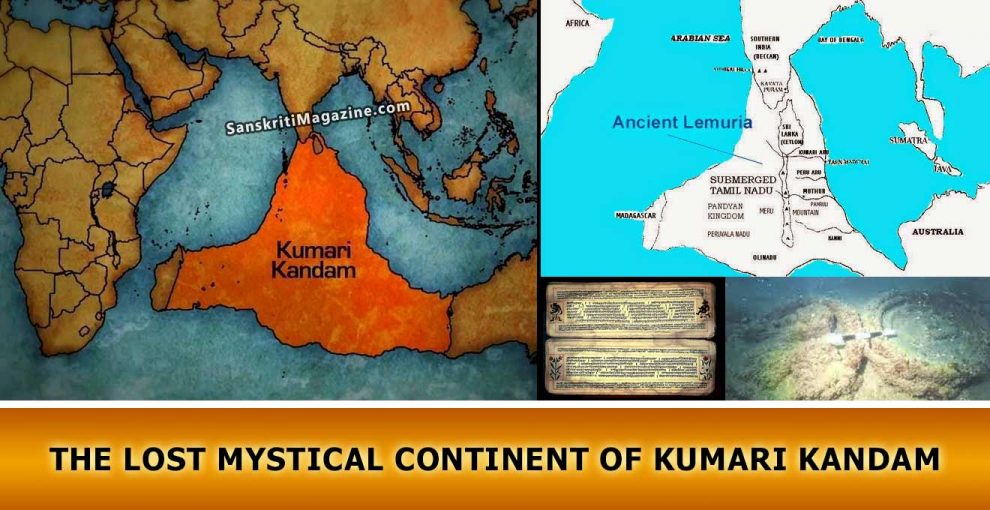
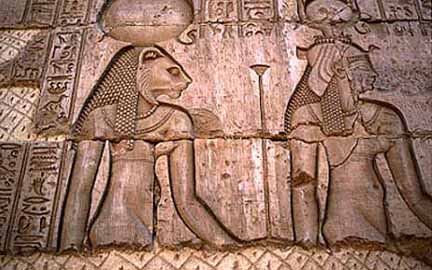









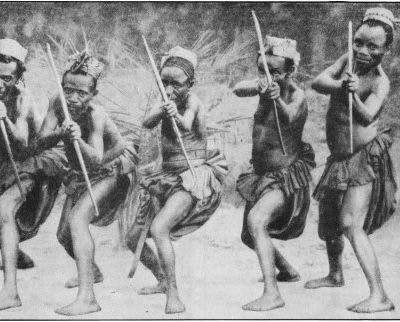
























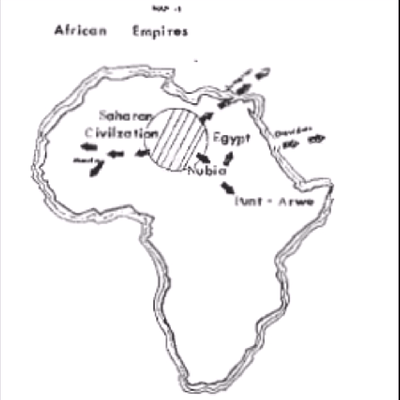



















































































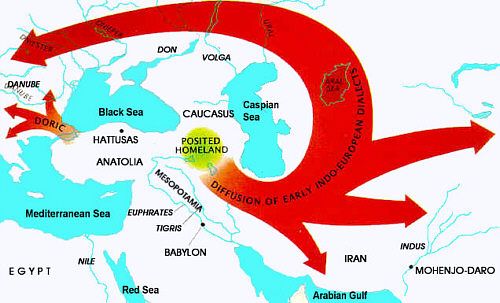
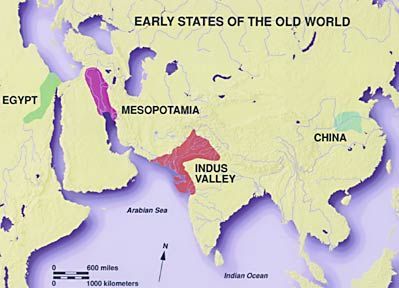











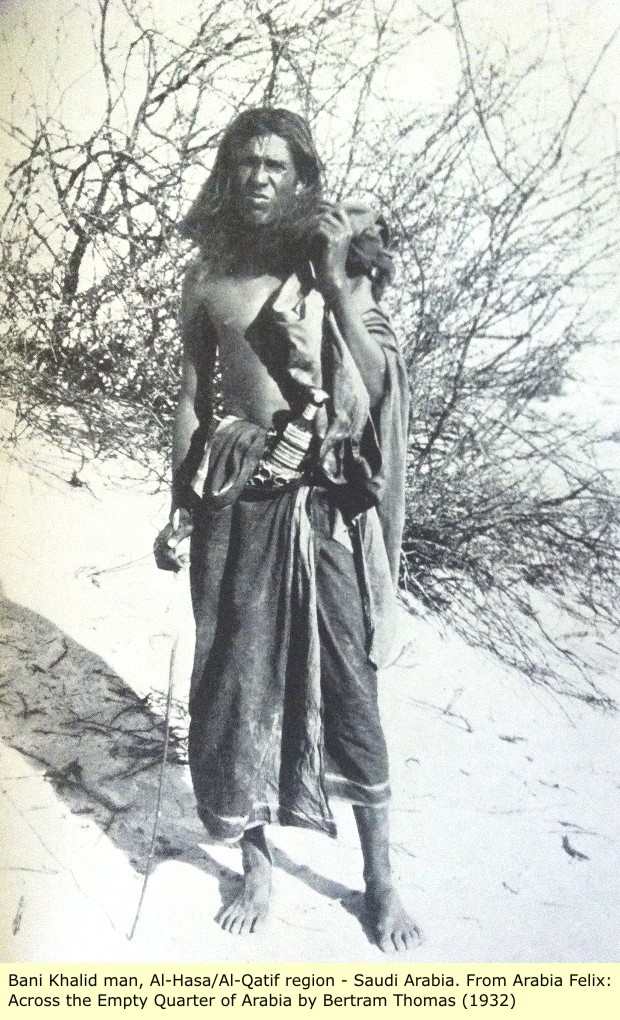



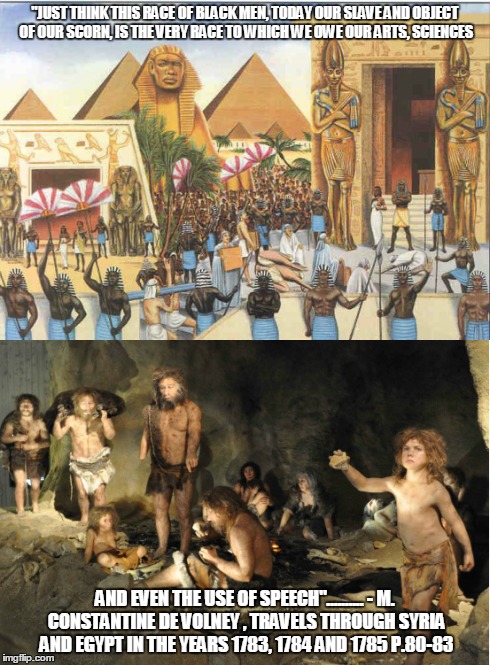










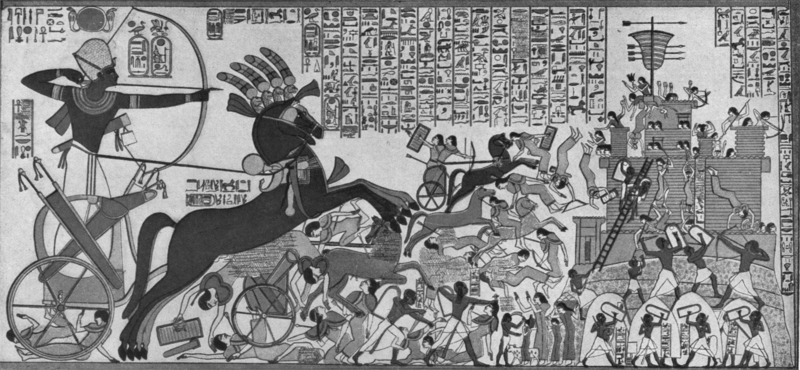








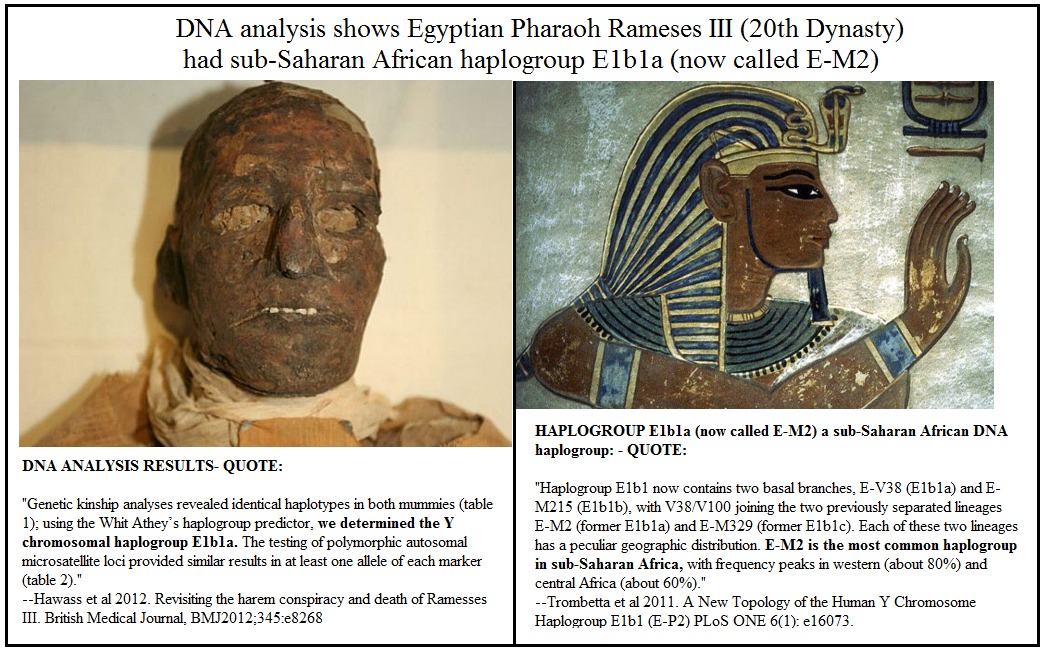










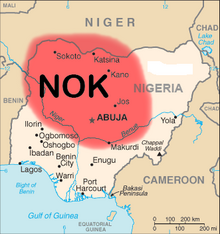
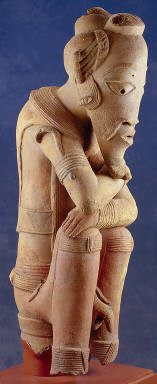

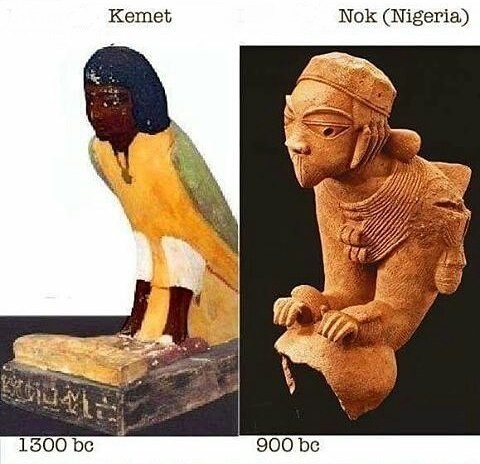

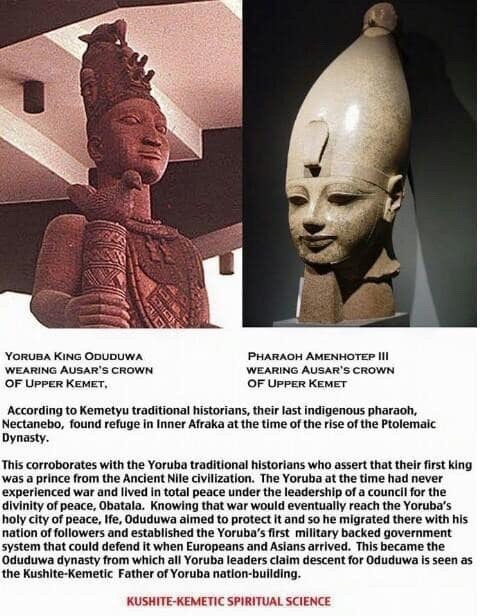



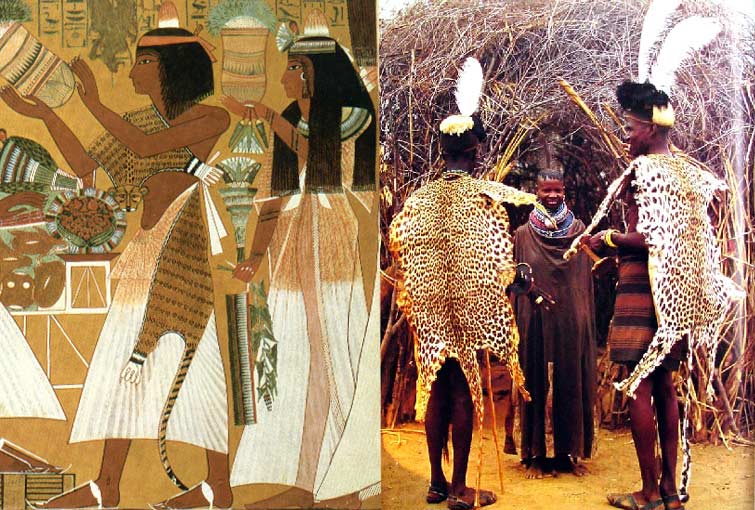
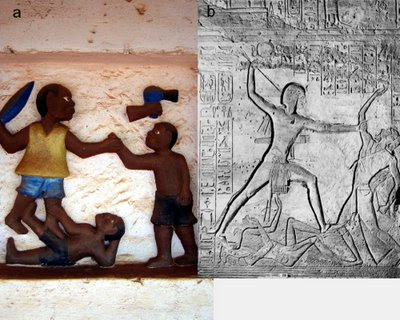


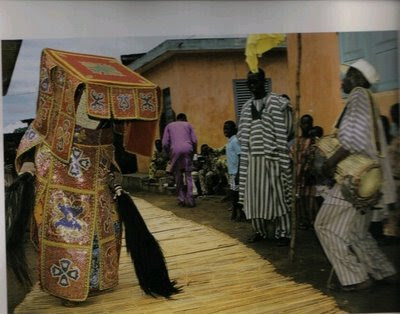
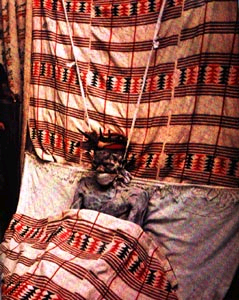









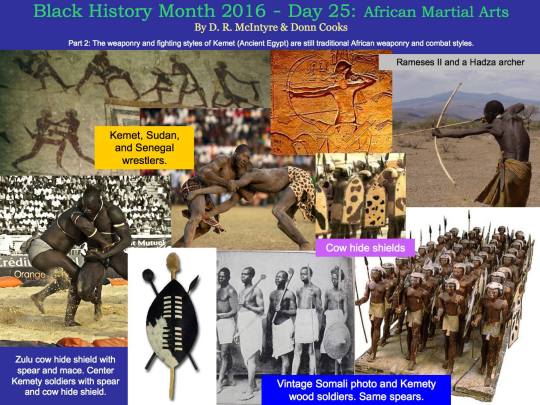






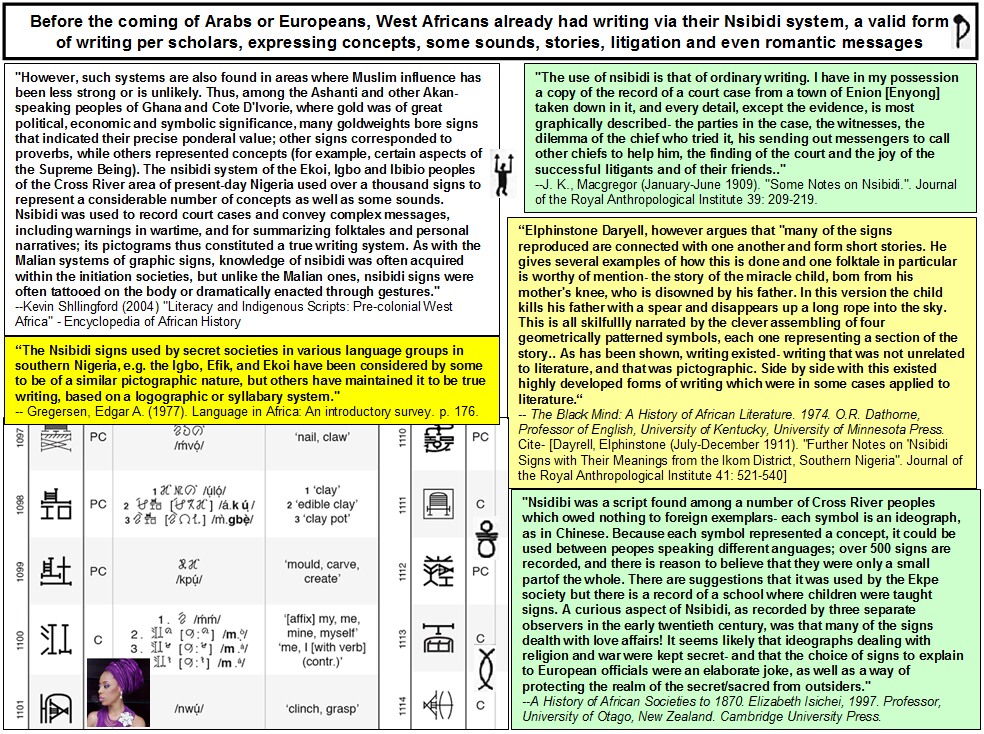

 ).
). 








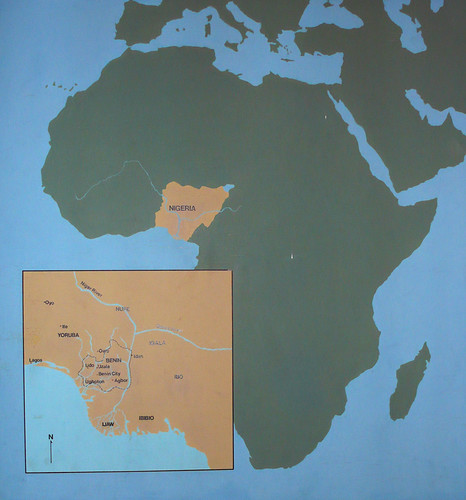













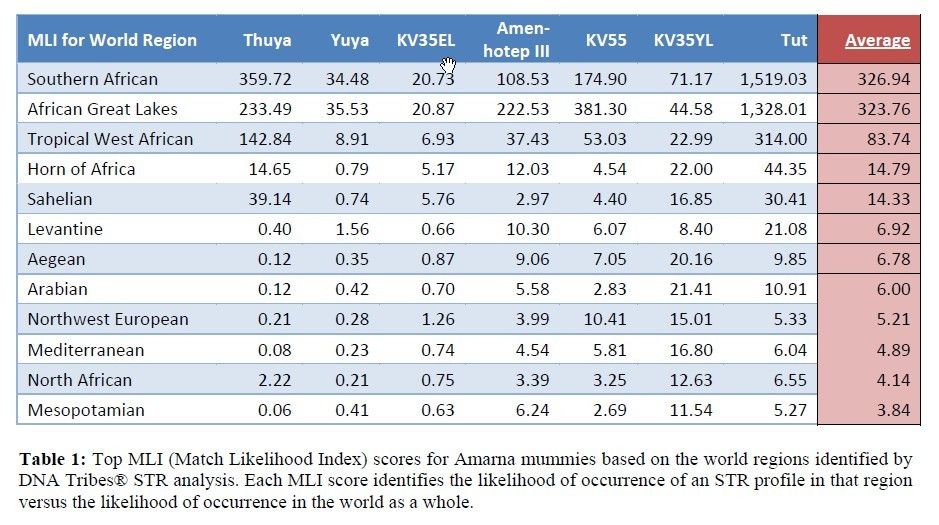


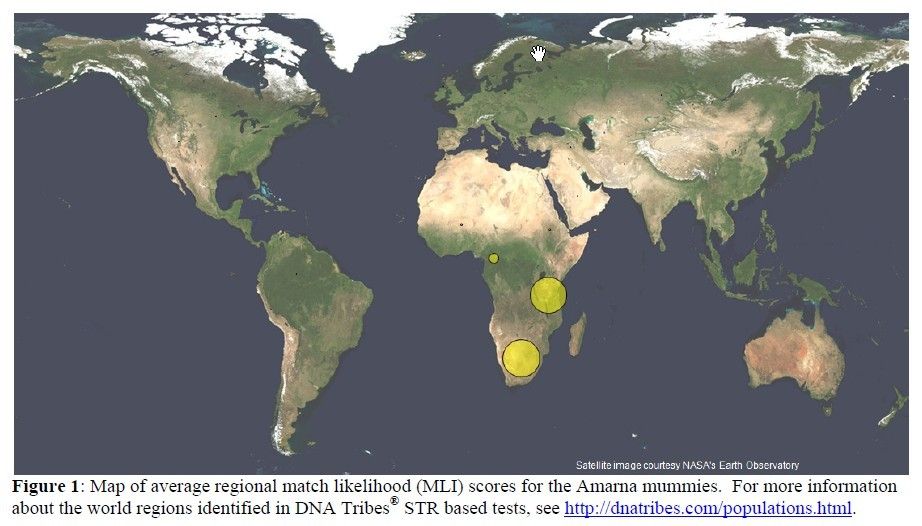
 bring to an end
bring to an end be healthy
be healthy moment, time
moment, time